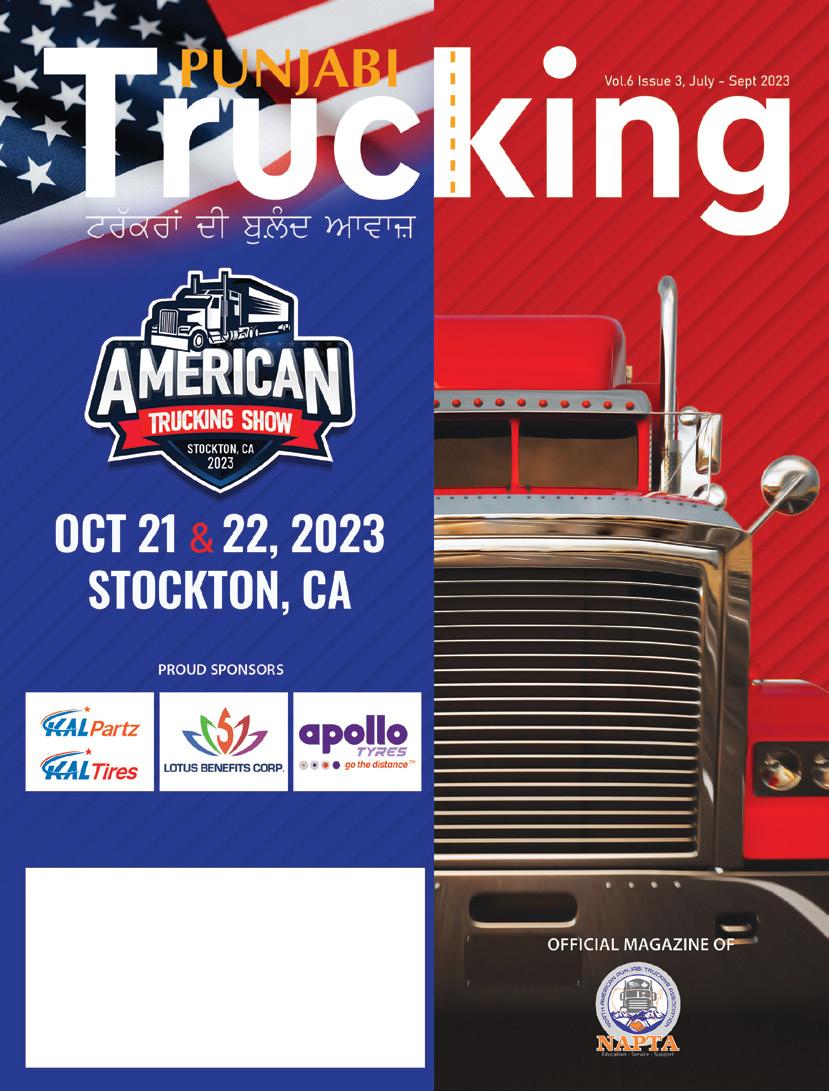
PRIMELINK

80% hook and drop.
Consistent work year around. If you’re 23 or older with 2 year verified experience we need you. Please apply
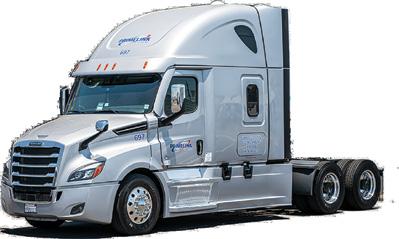


www.punjabitruckingusa.com July - September 2023 2 Transpor tation PRESIDENT Visibil i ty you can rely on
Halo Tire Inflater System In House Shop and Maintenance Team Real-time GPS and Improves Temperature Tracking Late Model 140 Trucks and 180 Refrigerated Trailers Contac t Us 800 - 641-7374 Info@primelinkexpress com 4449 N Brawley Ave, Fresno, CA 93722
Why Us:
EXPRESS
HIRING
is NOW
regional and long haul drivers. We pay W2 and benefits with excellent pay.
at www.PrimelinkExpress.com
CDLJobsGuru.com
or Powered by



www.punjabitruckingusa.com July - September 2023 3 LEADING THE CHARGE W E H A V E E L E C T R I C T R U C K S G O L D E N S T A T E P E T E R B I L T Golden State Peterbilt Locations FRESNO 4390 SOUTH BAGLEY, AVE. FRESNO, CA 93725 TEL (800) 462-1863 PORTERVILLE 15243 ROAD 192 PORTERVILLE, CA 93257 TEL (800) 421-0117 BAKERSFIELD 1450 SOUTH UNION AVE. BAKERSFIELD, CA 93307 TEL (800) 936-4567 WWW.EMTHARP.COM/PETERBILT
FROM THE EDITOR
Raman S. Dhillon
As we all know that trucking industry is going thru tough times, but also we all know that correction was needed. We need to understand the needs of our businesses and make sure to implement proper guidelines. There are lots of issues which are upcoming and threatening our small trucking businesses. Broker transparency, speed limiters, fraud, theft, detention time, use of restrooms etc. We need to pay attention to all of them and understand and learn to raise voice for your rights. For the moment there is a small positive step happen that there is agreement happen between CARB and Engine Manufacturing Association to delay Jan 2024 deadline for new emission engines to Jan 2027 as set up by EPA. We need to understand that this is the time for our truckers to join forces and fight for their rights.
Appointment for Julie Sue is still pending. As we said in previous issue that it’s going to tough for her to win this nomination because of her role in making and enforcing AB-5 in California. We can clearly see that this year is going to be the toughest one in the trucking industry. We have seen big giant trucking companies are in big trouble. We ask our readers to understand this industry very closely, then make decisions to make moves to grow. I think this is the time to do downsizing, and that is really a big issue with our Punjabi Community. Just want to ask our community to ask for help if you think that things are getting out of hand, and there is nothing wrong with that. Please share with your family if you have any issues and stay strong because we will bounce back even stronger. Drive safe and Stay Positive.
EDITOR
Raman S. Dhillon press@punjabitruckingusa.com
ASSOCIATE-EDITOR
Sunny Vraitch
CONTENT MANAGER
Rhea Randhawa
OFFICE MANAGER
Rahul Salaria info@punjabitruckingusa.com

ADVERTISING SALES
Raman S. Dhillon sales@punjabitruckingusa.com
MAGAZINE LAYOUT
Ranjit Singh Bhamra

GRAPHIC DESIGN
Maxx Printing, LLC
Harshpal Brar
TRANSLATIONS
www.MyTekHub.com
CONTRIBUTORS
Rhea Randhawa
Pash Brar
Michael Smith
Mandeep Kaur
Ravinder Dhillon
Rupinder Kaur
CIRCULATION MANAGER
Jessie Dhillon
www.punjabitruckingusa.com July - September 2023 4
Published quarterly by Primetime Multimedia Company LLC 4709 North El Capitan #104, Fresno, CA 93722 Tel: 001 877 806 2525 | Email: info@punjabitruckingusa.com All Rights Reserved. No material herein or portions thereof may be printed without the written consent of the publisher. DISCLAIMER: Primetime Multimedia Company LLC assumes all advertisers to be reliable and responsible for any and all liability for their claims. The publisher reserves the right to refuse any advertisement it may find unfit for publication. The opinions expressed in articles and features are of the writers and may not be those of the publisher. THE PUBLISHER ASSUMES NO RESPONSIBILITY OF ANY KIND.
Official Magazine for: North America Punjabi Trucking Association
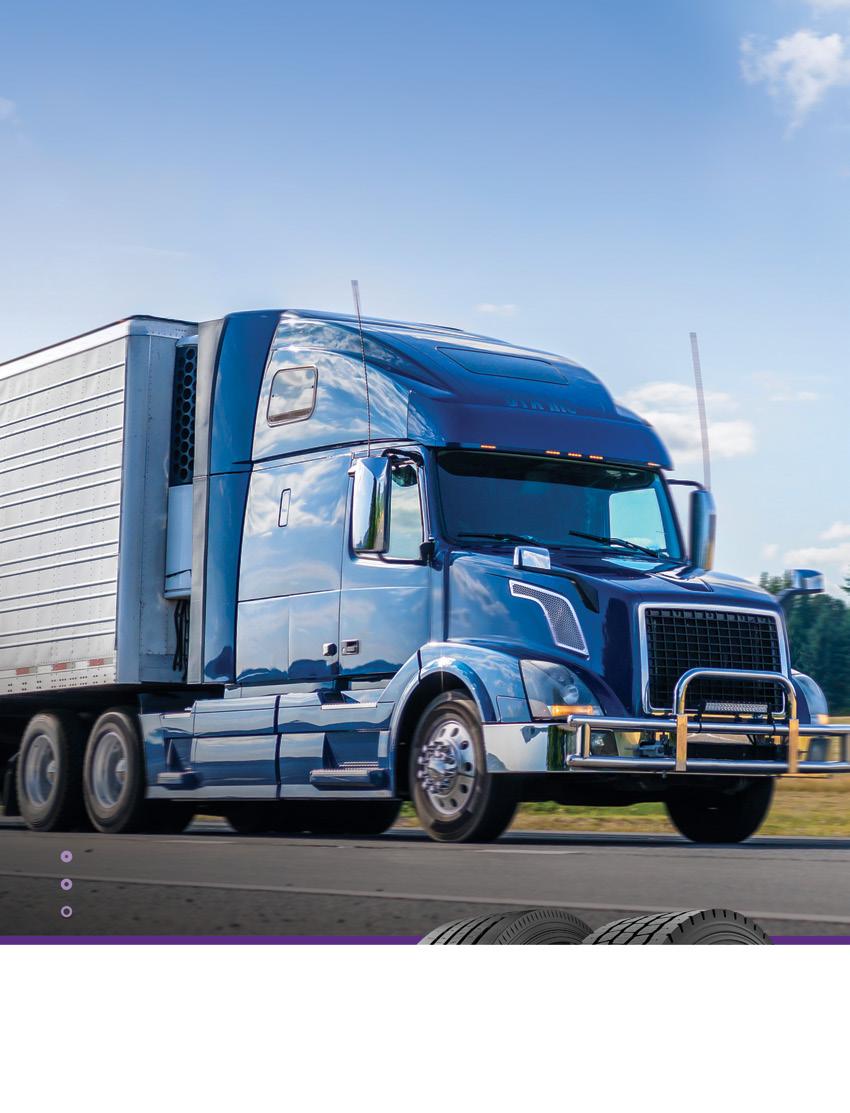









www.punjabitruckingusa.com July - September 2023 6 CONTENTS ARTICLES 46 Living the American Dream: Sonsray's Expansion Across 5 States Apollo Tires .................................................. 05 Automann ....................................................... 45 AWAKO ........................................................... 07 Big Rig Tires & Alignment ............................. 39 BP Lab Services ............................................ 28 CDL Jobs Guru ............................................ 47 Gillson Trucking Inc. ..................................... 11 Golden State Peterbilt ................................... 03 Golden Land Trans. Insurance .................... 46 Jagdeep Singh Insurance Agency ................ 36 Jessie Dhillon ............................................... 35 Kam-Way Transportation Inc .................... 41 Load Stop ..................................................... 13 Lotus Benefits Corp ..................................... 39 Maxx Printing ............................................... 19 NAPTA .................................................... 29, 43 NEXA Mortgages ........................................ 15 Punjabi Trucking 360 ................................... 25 Prime Display .............................................. 19 Primelink Express ........................................ 02 Revolution Capital ................................. 11, 17 SimbaQuartz ................................................ 21 Singh Financing .......................................... 23 Sonsray Parts & Service .............................. 24 The Driver Services ....................................... 27 Volvo Trucks ................................................. 48 08 nvW ATRI tr~ikMg audXog mwirjuAwnw dy pRBwvW dI jWc krygw 34 kYl AsYNblI v~loN Awtonoms tr~kW leI mnu~KI sMcwlkW dI pUrqI krn leI ib~l pws kIqw igAw[ 14 Trucking and punjabi’s Mental health 37 nvIN irsrc muqwibk vwlW dI tYsitMg nwl Kqrnwk dvweIAW leI bhuq izAwdw skwrwqmk nqIjy swhmxy AwauNdy hn 16 26 Clean Truck Partnership Promises Collaboration and Flexibility in California’s Transition to Zero-Emission Vehicles Texas Blessed as Autonomous Truck Developers Test New Technologies 44 nvyN kYrIArW ƒ nvyN/purwxy pRsqwivq inXmW leI inpuMnqw tYst pws krny lwzmI 10 30 42 40 20 Connect with Us 38 INDUSTRY NEWS
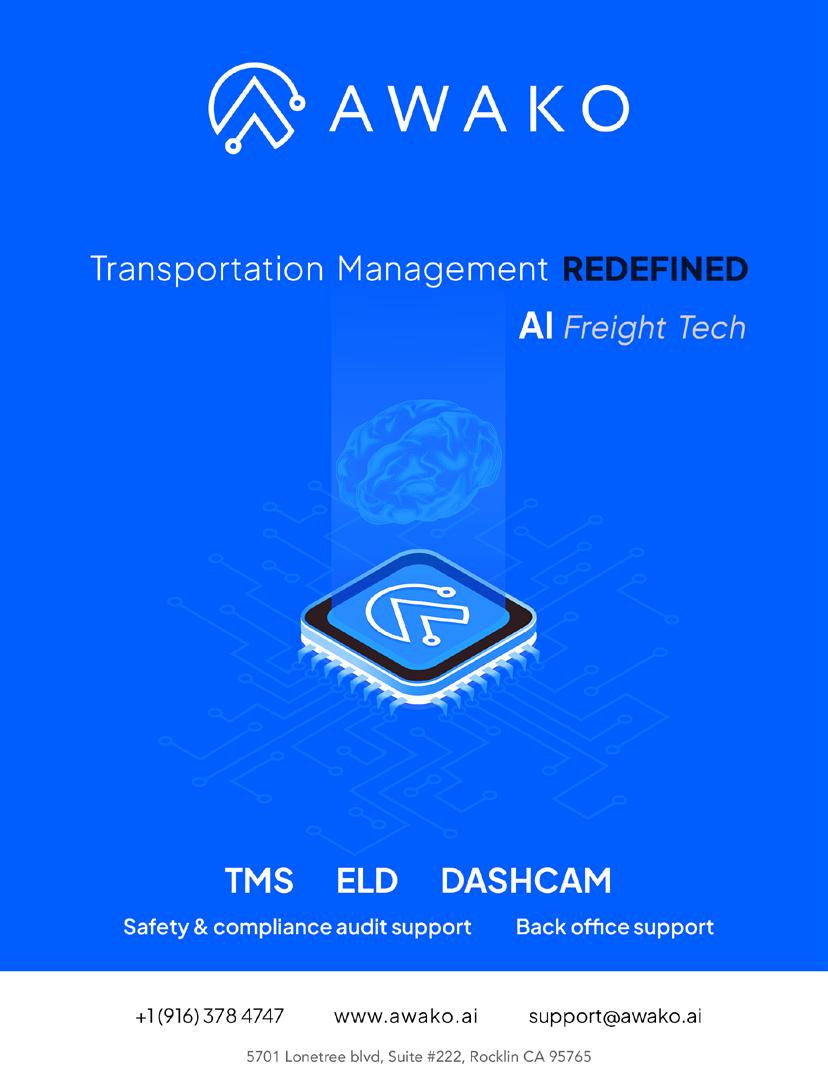
nvW ATRI tr~ikMg audXog mwirjuAwnw dy
pRBwvW dI jWc krygw
mOjUdw smyN iv~c, 23 rwjW ny mwirjuAwnw

ƒ kwƒnI mwnqw id~qI hY Aqy hor rwj
vI iesƒ mwnqw dyx dI soc rhy hn[
qkrIbn A~Dy AmrIkn lok mwirjuAwnw
dy pRBwvW dI lpyt iv~c Awaux vwly hn[
iPr vI, mwirjuAwnw Aqy hweIvy sur~iKAw
sbMDW bwry srkwr kol bhuq G~t jwxkwrI hY[
srkwr ieh cwhuMdI hY ik ies Koj 'qy izAwdw pYsy Krc kIqy jwx[ 2018 iv~c
ies qy $143 imlIAn Krc kIqy gey sn
Aqy nwl hI ieh Brosw vI dvwieAw igAw
hY ik 2021 dy buinAwdI FWcy dy ib~l dy
bYnr hyT hor pYsy Krc kIqy jwxgy[ ijs
iv~c sVk sur~iKAw 'qy mwirjuAwnw dy
pRBwvW bwry jwxkwrI id~qI jwvygI[
AmrIkn tRWsportySn irsrc
ieMstIicaUt (ey.tI.Awr.AweI.) duAwrw
ies ivSy 'qy kIqy gey ie~k qwzw srvy
muqwbk is~tw k~iFAw, "jdoN ik AmrIkw
iv~c fr~g dI vrqoN qy aupl~bDqw kwPI
izAwdw hY[ au~Qy mwirjuAwnw dI vrqoN Aqy
jnqk sur~iKAw sbMDW bwry mh~qvpUrn
jwxkwrI iv~c kwPI AMqr mOjUd hn[
www.punjabitruckingusa.com July - September 2023 8
COVER ARTICLE
pySyvr fRweIvrW Aqy smu~cI hweIvy
sur~iKAw 'qy kmzorI dy pRBwvW dw Ajy Koj
krky FukvW dsqwvyzIkrn kIqw jwxw hY[
ATRI keI v~fIAW tr~ikMg kMpnIAW
Aqy AmrIkn tr~ikMg AYsosIeySnW nwl
sbMD r~Kx Aqy ibnHw lwB vwlI iek Koj
sMsQw hY[ iesdI vYbsweIt dy Anuswr, iesdw mu~K imSn ie~k sur~iKAq,
vDIAw Aqy sMBv AwvwjweI pRxwlI pRdwn
krnw hY Aqy tr~ikMg audXog dy nwlnwl AwvwjweI Kyqr iv~c Koj krnw hY[
jUn iv~c pRkwiSq kIqI geI ie~k
nvIN irport Anuswr, mwirjuAwnw dy
kwƒnIkrx Aqy AprwDIkrn dy ieiqhws
bwry jwxkwrI id~qI geI hY[ ies mu~dy
'qy Koj dI Gwt dw mu~K kwrn ieh hY ik mwirjuAwnw bwry isrP kuJ swlW leI
kuJ rwjW ivc hI kwƒn v~loN iejwzq
id~qI geI hY[ PYfrl srkwr Anuswr mwirjuAwnw ie~k Aijhw fr~g hY, ijsdw koeI Kws audyS nhIN hY[
AiDAYn iv~c pwieAw igAw hY ik mwirjuAwnw dI vrqoN krn vwly frweIvrW
ƒ kmzor qwlmyl, ivgVdI Dwrnw, XwddwSq Aqy sm~isAw h~l krn iv~c muSklW AwauNdI hY[
irport muqwibk " jo motr vhIkl clwauNdy hn, auhnW leI PYslw lYx dy nwl-nwl pRqIikRAw dw smW l~gxw, Kws icMqw dw ivSw hY[ ijs ƒ mwirjuAwnw duAwrw hOlI kIqw jw skdw hY["
2021 dI ie~k Koj dw hvwlw idMdy hoey, ATRI irport iv~c ikhw igAw hY ik "mwirjuAwnw pRBwv frweIivMg pRdrSn Aqy frweIivMg-sbMDq boDwqmk hunrW ijvyN pwsy dw inXMqrx, trYikMg, vMifAw iDAwn Awid sm~isAwvW pYdw hox dw Kdsw pwieAw igAw[" AiDAYn iv~coN ieh sbUq vI pyS kIqy gey hn ik mwirjuAwnw dI vrqoN krn dy pMj GMty aufIk qoN bwAd frweIvr vwhn clwaux[
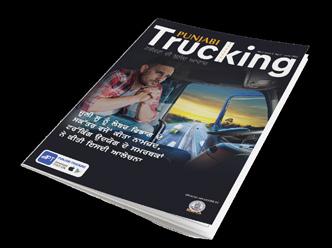
irport iv~c ieh is~tw vI k~iFAw igAw hY ik AmrIkw kol mwirjuAwnw dI vrqoN Aqy hweIvyA sur~iKAw ƒ sMBwlx leI do "pwQvyA" hn[
"pihlw pwQvyA" Asl iv~c kuJ nhIN
krnw Aqy mwirjuAwnw ƒ ie~k AnusUcI fr~g mMnxw hY[ irport d~sdI hY ik
2020 qoN lY ky hux q~k 100,000 qoN v~D tr~k frweIvrW ƒ skwrwqmk tYst krn leI ifaUtI qoN rwhq id~qI geI hY[
jykr kwƒn iesy qrHW rhy qW tr~ikMg audXog iv~c frweIvr ^rwb huMdy rihxgy[ ies qoN ielwvw hor rwj kwƒn bxwauNdy hn, tr~ikMg audXog rwj Aqy sMGI srkwr ivckwr ies mu~dy 'qy keI ivvwdW dy ivckwr hovygw[
"dUjw pwQvyA" hyTW id~qy smwDwn iDAwn kyNdirq krdy hn:
rwStrI qOr 'qy mwnqw pRwpq mwirjuAwnw tYst Aqy kmzorI dy imAwrW dw ivkws kro[ mwirjuAwnw dI jWc leI skRIn ie~k kYrIAr dI r~iKAw krygI Aqy sMGI Koj Aqy fytw sMgRih duAwrw hweIvyA sur~iKAw 'qy mwirjuAwnw dy pRBwvW bwry vDyry igAwn hwisl kro[
www.punjabitruckingusa.com July - September 2023 9 COVER ARTICLE
If you want to be featured on the Punjabi Trucking Magazine or Punjabi Trucking 360 Podcast or Raman Dhillon Show Please contact us, info@ramandhillonshow.com or text us at 559-701-8000
New ATRI Study Examines Marijuana’s Impact on Trucking Industry

Currently, 23 states have legalized recreational marijuana and others are not far behind. Approximately half of Americans are only a short drive away from a marijuana dispensary. Yet, there is very little hard data about the relationship between marijuana and highway safety.
That may be changing as the government begins to spend more money on research. In 2018, $143 million was spent and it is assured that more will be spent under the banner of the 2021 infrastructure bill which includes language about producing an analysis of marijuana’s impact on road safety.
A recent study on the topic by the American Transportation Research Institute (ATRI) concludes, “While there
is growing acceptance and availability of the drug in the U.S., there exist significant knowledge gaps regarding the relationship between marijuana use and public safety. The impacts of impairment on individual drivers and overall highway safety have yet to be adequately documented through research.”
ATRI is a not-for-profit research organization with ties to several large trucking companies and the American Trucking Associations. According to its website, its “primary mission is to conduct transportation research, with an emphasis on the trucking industry’s essential role in a safe, efficient and viable transportation system.”
The new report, published in June, chronicles the history of marijuana
legalization and decriminalization. It points out that one of the major reasons for lack of research on the issue is that marijuana has only been legal in some states for a few years. In fact, as far as the federal government, marijuana remains a Schedule I drug which has no medicinal or practical purpose.
The report also looks at marijuana and highway safety. The study found that use of marijuana can cause impaired coordination, distorted perception, memory, and problem-solving difficulties.
According to the report, “Of particular concern for those operating a motor vehicle are decision-making capabilities as well as reaction times, which can be slowed by marijuana.”
www.punjabitruckingusa.com July - September 2023 10
kvr AwrtIkl
In citing a 2021 research study, the ATRI report said, “Peak marijuana effects were found to impair ‘driving performance and driving-related cognitive skills (e.g., lateral control, tracking, divided attention).’ The study also offered evidence that drivers should wait five hours after inhaling marijuana before operating a vehicle.”
The report concludes that the U.S. has two potential “pathways” in its handling of marijuana usage and highway safety.
“Pathway One” is to basically do nothing and keep marijuana a Schedule I drug. The report points out that since 2020 over 100,000 truck drivers have been relieved from duty for testing positive.

If laws remain the same, the trucking industry will continue to hemorrhage drivers. In addition, as more states legalize, the trucking industry will be in the middle of a number of conflicts between states and the federal government over the issue.
“Pathway Two” would focus on the following solutions: “Develop a Nationally Recognized Marijuana Test and Impairment Standards; Protect a Carrier’s Choice to Screen for Marijuana and Develop Greater Knowledge of Marijuana’s Impacts on Highway Safety through Federal Research and Data Collection.”
INVOICE FACTORING

We’re already helping thousands of businesses grow with transparent & flexible factoring.
AsIN quhwfIAW ienvOiesW sym fyA
pyA krdy hW Aqy quhwfI klYkSn
vI hYNfl krdy hW[
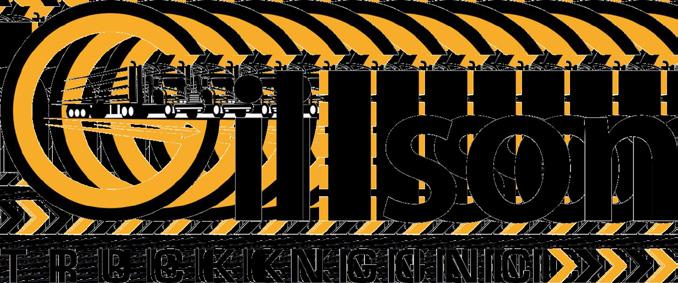
AijhI iksI vI qrWH dI srivs
leI mYnUM A`j hI kwl kro[
www.punjabitruckingusa.com July - September 2023 11 G O O D P AY - F A M I LY E N V I R O N M E N T B E N E F I T S - D E D I C A T E D & T E A M L O A D S I N T B - I A HIRING DRIVERS & OWNER OPERATORS 408-386-0913 Educat on - Ser v ce - Suppor BI T JA R N U U C P KIN N G ICA A R S E S O M C A A H T T I R O O N N NAPTA M E D M U B O E R R P
900-9001
Larkin Avenue Clovis, CA, 93612
Bobby
Dhillon President – Western Division (855) 879-1511 ext 332 (559)
BDhillon@revinc.com 2941
Trusted
by our clients
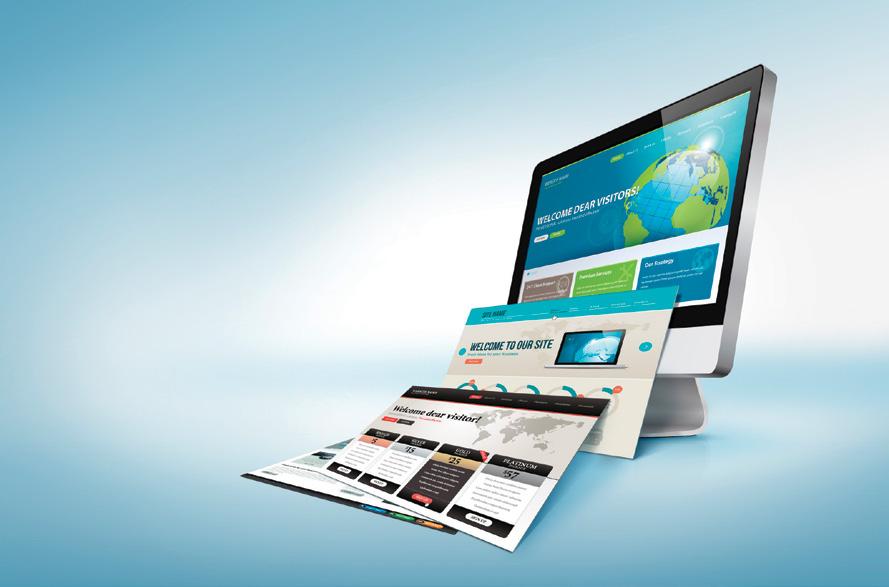
www.punjabitruckingusa.com July - September 2023 12 INDUSTRY NEWS 559- 293-8700 info@primetimemm.com WE NOW OFFER WEB SERVICES Website Design and Development Mobile App Development Custom Software Development Content Strategy Database Architecture E-Commerce Solutions Shopify Branding & Positioning Google Adwords & Analytics We help our clients launch brands, design customized websites and deliver digital marketing solutions using passion, experience and expertise. WEBSITE DESIGNERS and WEB SUPPORT THAT WORKS

Trucking and punjabi’s Mental health
The current research shows that this is not a great time to be a Owner Operator Truck Driver. There are many factors that influenced today’s trucking market, but the major one is the end of the Covid pandemic. The demand for work for owner operators has significantly decreased, and the owner operators are having a hard time finding work or they are getting work that pays significantly less. What does that mean for the drivers?

The two major effects are financial and emotional and/or psychological. These two can create a very stressful situation for the drivers and their families. Even though the impact is on the whole industry, here I would like to focus on how it is affecting drivers of our community? Our punjabi trucking community, which in large is male and both young and middle age. The young drivers might have a different emotional impact than the older drivers but the financial stress could be the same. In our culture not doing well in a business is not greatly accepted or looked down upon. I do understand that we all want to do well and be successful and not being successful is
not an option. This might be the reason most of us feel bad about the situation and take it as our own personal fault, when it is not. Are you able to see or understand this?
In today’s market economic turmoil is occurring very frequently these days. In the last twenty years there have been at least 4-5 times that I have experienced or been through. So knowing this volatile market, how are we handling these ups and downs? Are we prepared for both ups and downs or not? How can we be prepared for this? How is it impacting our life, I mean your life as a truck driver? How is it affecting your health, especially your mental health? Again research shows that currently drivers are going through a mental health crisis. Mental health always has this taboo in our society and normal emotions like anxiety and depression are labeled as something wrong with you. How can we overcome this and seek help when we feel that way? Sharing those emotions with your loved one is also not understood or looked down in our culture. So where should we or you go? I bet most of you don’t even feel comfortable talking about this to your
partners, siblings, parents or your best friends. If you do kudos to you.
What I want to do here is to help you find some resources to deal with this crisis or problem. A platform where we can openly talk about this and find solutions. The first most important step here is to accept it, then to talk about it with other people who are experiencing the same stress. There are also other resources to deal with it that we can explore and have access to. Work or job stress has always been the major stressor for people all over the world, especially here in the U.S. YOU ARE NOT ALONE, and everyone feels stressed sometimes in their personal or professional life.
Please share your concerns here and ask questions, and I will make every effort to find solutions or find a resource to help you out. Let's talk about it, cause not talking or addressing will not take this away.
( To ask your questions please text us at 559-701-8000)
Your Health Coach Rupinder Kaur, RN MSN Ed.
www.punjabitruckingusa.com July - September 2023 14 INDUSTRY NEWS
April - June 2023


www.punjabitruckingusa.com July - September 2023 15 jykr qusIN G~t qoN drimAwnI-Awmdn vwly pihlI vwr Gr KrIddwr ho qW dyKo ik qusIN zIro kloizMg lwgqW jW loVINdy fwaUn pymYNt nwl Awpxw Gr ikvyN KrId skdy ho[ Licence number NMLS# 2000498 AZMB# 0944059 This program is only available for California residents for limited time. Punjabi Trucking Magazine delivered FREE to your home or office. Only $10.00 per year Just pay shipping & handling and get it via US Mail anywhere in USA Subscribe today Email: info@punjabitruckingusa.com or call 877.806.2525
Clean Truck Partnership Promises Collaboration and Flexibility in California’s Transition to Zero-Emission Vehicles
Looking to advance the development of zeroemission vehicles (ZEVs), the California Air Resources Board (CARB) and the world’s top truck manufacturers have agreed to work together to further the deployment of clean trucks in the state.

The companies include Cummins Inc., Daimler Truck North America, General Motors, Ford Motor
Company, Hino Motors Limited, Isuzu, Navistar, Volvo, and Paccar Inc. It also includes the Truck and Engine Manufacturers Association (EMA).
According to CARB, the agreement, labeled the Clean Truck Partnership, provides flexibility for manufacturers to ultimately meet the state’s climate and emission reduction goals.
By working together, California air quality regulators and truck manufacturers will work toward developing the technology, infrastructure and supply chain that will meet the state’s ambitious clean air goals.
CARB noted the partnership “marks a commitment from the companies to meet California’s vehicle standards that will require the
www.punjabitruckingusa.com July - September 2023 16 INDUSTRY ARTICLE
sale and adoption of zero-emissions technology in the state, regardless of whether any other entity challenges California’s authority to set more stringent emissions standards under the federal Clean Air Act.”
The main goal for manufacturers is to be collaborative with CARB in the introduction of new regulations that would move California to a zero-emission future. In the past, manufacturers have been blindsided by new CARB mandates.
“This agreement reaffirms EMA’s and its members’ longstanding commitment to reducing emissions and to a zero-emissions commercial vehicle future, and it demonstrates how EMA and CARB can work together to achieve shared clean air goals,” said EMA President Jed Mandel. “Through this agreement, we have aligned on a single nationwide nitrogen oxide emissions standard, secured needed lead time and stability for manufacturers, and agreed on regulatory changes that will ensure continued availability of commercial vehicles. We look forward to continuing to work constructively with CARB on future regulatory and infrastructure efforts designed to support a successful transition to ZEVs.”
timelines, targets, and technologies.”


Likewise, Truckload Carriers Association President said the partnership will force carriers and drivers to “experience the pain points of this ill-suited compromise. As we have continued to point out, the issues of reliability, affordability and achievability of these regulations must remain at the forefront of these conversations.”
The main points of the agreement include:
CARB will align with EPA’s 2027 regulations for nitrogen oxide emissions. CARB also will modify elements of the 2024 NOx emission regulations for which manufacturers will provide offsets as necessary to maintain California’s emission targets.
CARB commits to providing no less than four years of lead time and at least three years of regulatory stability before imposing new requirements.
We support over 1,000 businesses with invoice management, credit underwriting, and collection services. By offering dedicated support and transparent access to the factoring process, we help our clients grow their operations, maintain their competitive edge, and become leaders in their industries.

trucks as reasonably possible in every state that has or will adopt CARB’s ACT regulations, even potentially exceeding any future U.S. EPA Phase 3 Greenhouse Gas requirements, irrespective of the outcome of any litigation that has been filed or may be filed challenging the waivers or authorizations for those regulations or CARB’s or any state’s overall authority to implement those regulations."
The American Trucking Associations (ATA), however, was not as enthusiastic over the partnership. In a press release on the ATA website, President and CEO Chris Spear said, “We’ve long advocated for a single, national standard that respects and preserves interstate commerce. However, the trucking industry shouldn’t be strong-armed by the government into an agreement with such terms. Our association represents motor carrier members— the paying customers who will inherit the costs of this agreement—and we will not roll over nor relinquish our right to litigate with any party when our interests are threatened. It is clear that America has lost its way when the government bullies the private sector to succumb to unachievable
Truck manufacturers commit to meeting CARB’s zeroemission and criteria pollutant regulations in the state, regardless of any attempts by other entities to challenge California’s authority. As such, the OEMs and EMA have agreed that they will not legally challenge or support others’ legal challenges to any state’s adoption of CARB's regulations.
OEMs also committed to “putting forth their best efforts to sell as many zero-emission
A spokesperson for Cummins Inc. said the manufacturer was pleased with the agreement, especially the flexibility the partnership promises. “We also welcome CARB’s commitment to collaborate in the further development of ZEV infrastructure needed for our customers to adopt these technologies,” said Shelley A. Knust, Vice President of Product Compliance and Regulatory Affairs. “These actions will enable Cummins to improve product availability for our customers, while delivering significant emissions reductions.”
www.punjabitruckingusa.com
Davinder Singh Trusted by our clients 559-343-9211 dsingh@revinc.com We’re already helping thousands of businesses grow with transparent & flexible factoring. INVOICE FACTORING AsIN hzwrW hI ibznsIs dI PYkirMg iv`c mdd kr rhy hW 4.9 out of 5 ieMfstrI Awritkl
NHTSA Announces Proposed Rule to Mandate AEB Systems in Passenger Cars and Light Trucks

As a “key component” of the U.S. Department of Transportation’s (DOT) National Roadway Safety Strategy, the National Highway Safety Administration (NHTSA) recently announced a Notice of Proposed Rulemaking requiring all new passenger cars and light trucks to include automatic emergency braking (AEB) technology within three years.
“Today, we take an important step forward to save lives and make our roadways safer for all Americans,” said DOT Secretary Pete Buttigieg. “Just as life saving innovations from previous generations like seatbelts and airbags have helped improve safety, requiring automatic emergency braking on cars and trucks would keep all of us safer on the roads.”
\ Although traffic accident fatalities dropped slightly last year after a 16-year high in 2021, over 42,000 Americans lost their lives on U.S. Roads.
According to the NHTSA, the new rule “would save at least 360 lives a year and reduce injuries by at least 24,000 annually. In addition, these AEB systems would result in significant reductions in property damage caused by rear-end crashes.”
While 90% of new passenger vehicles already come equipped with AEB systems, Ann Carlson, NHTSA chief counsel, says that the new rule would lead to even more effective braking systems that would allow a vehicle to fully avoid a crash at up to 50 mph if the driver never touched the
brakes. If slight braking, that speed goes up to 62 mph.
“With this proposal, we could change a high-speed crash from a deadly one to a lower-speed crash with minor injuries or just property damage,” Carlson said.
Carlson also noted that the new rule would require AEB systems to identify pedestrians and bicyclists in low light conditions. Pedestrian deaths have increased more than 50% since 2013. Two-thirds of those deaths could potentially be prevented by AEB.
The proposed rule has a 60-day comment period before a final version of the rule will be published.
www.punjabitruckingusa.com July - September 2023 18


www.punjabitruckingusa.com July - September 2023 19 ENGAGE . . ENTERTAIN . ELEVATE STATISTICS 9 0% of consumers say that product videos are helpful in the decision process 76% increase in message recall when viewed through video 3 6% of consumers trust video marketing 8 0% of consumers recall a video ad they viewed in the past 30 days 75% executives watch businessrelated videos at least once a week 4 8% increase in brand recognition when viewed through video User interactions Most popular forms of content 877-806-2525 info@PrimeDisplay.io Call Today to Book your Spot! www.PrimeDisplay.io 31% music 3 9% comedy 33% news
New CDL Training Programs to be Established at Georgia and Wyoming Colleges
Looking to make it easier for new truck drivers to get started, a technical college in Georgia and a community college in Wyoming are taking advantage of state and private funding to expand their commercial driver license (CDL) programs.

Columbus Technical College is using money from Georgia’s Emergency Education Relief Grant, a fund for students who were impacted by the pandemic as well as money from the state’s Technical College System.
In Wyoming, Laramie County Community College received a $556,920 Pre-Hire Economic Development Grant earmarked specifically to train people who want to become truck drivers.
The grant covers tuition and the costs of the CDL certification program for more than 100 students. Applicants who complete the course will be provided job placement assistance and must agree to work in Wyoming.
“The starting pay is one of the best for blue-collar jobs,” Michael Geissler, Laramie College CDL program director, said during an open house at the college on May 20. “This state and nation rely heavily on its trucking industry to keep our economy moving, so the job stability and competitive pay and benefits are outstanding.”
In Columbus, a groundbreaking ceremony for a new CDL training facility next door to the U.S. Army base Fort Moore was held on May 1. The new training facility will be particularly important for transitioning military personnel who want to be trained as truck drivers after leaving active service.
“Columbus Tech is very excited to announce this new project in the city,” said College President Martha Ann Todd during the ceremony. “We believe this addition will serve as a workforce entry point for both exiting military, veterans and residents of the Chattahoochee Valley as they receive the training and
resources needed to fulfill workforce gaps in current critical fields.”
Additional money is being contributed by successful Columbus businessman Jack Pezold who last year sold his string of 20 McDonald’s restaurants in the local area. He said, “This groundbreaking represents the Columbus community’s commitment to providing access to good-paying jobs for soldiers returning to civilian life while also encouraging them to remain in the Valley area.”
The new CDL facility, scheduled to open later this year, will also house the future Veterans Education Career Resource Transition Workforce Development Center. The CDL program will train as many as 350 drivers a year.
The college was awarded $1.77 million in January 2022 from the state to spend on a driving pad, mobile classroom, trailers, and simulators.
www.punjabitruckingusa.com July - September 2023 20
INDUSTRY NEWS
jwrjIAw Aqy vwieimMg dy kwljW iv~c nvyN CDL
isKlweI pRogrwmW dI sQwpnw kIqI jwvygI
nvyN tr~k frweIvrW dI SurUAwq ƒ
Awswn bxwaux leI AsIN iek vDIAw
kdm cu~k rhy hW[ AsIN jwrjIAw iv~c
ie~k qknIkI kwlj Aqy vwieimMg iv~c
ie~k kimaUintI kwlj iv~c Awpxy vpwrk
frweIvr lwiesYNs (CDL) isKlweI pRogrwmW
dI SurUAwq krn jw rhy hW[ iesdw ivsqwr
krn leI rwj Aqy in~jI PMifMg dw lwB vI
lY rhy hW[
kolMbs tYknIkl kwlj jwrjIAw dI
AYmrjYNsI AYjUkySn irlIP gRWt dy pYsy dI
vrqoN kr irhw hY[ ieh gRWt dy pYsy auhnW
ividAwrQIAW leI PMf hY, jo mhWmwrI
duAwrw pRBwivq hoey sn[
vwieimMg iv~c, lwrmI kwauNtI kimaUintI
kwlj ƒ $556,920 pRI-hwier AwriQk
ivkws gRWt pRwpq hoeI, jo Kws qOr 'qy auhnW
lokW ƒ isKlweI dyx leI r~KI geI hY jo
tr~k frweIvr bxnw cwhuMdy hn[
gRWt iv~c 100 qoN v~D ividAwrQIAW
leI itaUSn Aqy CDL pRmwxIkrx pRogrwm
dy Krcy Swml hn[ kors pUrw krn vwly
ibnYkwrW ƒ nOkrI dI plysmYNt shwieqw
pRdwn kIqI jwvygI Aqy auhnW ƒ vXoimMg
iv~c kMm krn leI sihmq hoxw pvygw[ ie~k Epn hwaUs dOrwn 20 meI ƒ mweIkl gIslr, lwrmI kwlj sIfIAYl pRogrwm fwierYktr, ny ikhw ik, “SurUAwqI qnKwh blU-kwlr nOkrIAW leI sB qoN vDIAw hY[" auhnW ny ieh vI ikhw sI ik
swfI AwriQkqw pihlW nwloN A~gy v~D rhI hY[ "ieh rwj Aqy rwStr swfI Awmdn
ƒ cldw r~Kx leI Awpxy tr~ikMg audXog leI bhuq izAwdw Brosw krdy hn[ ies dy nwl frweIvrW ƒ nOkrI Aqy cMgI qnKwh dy nwl nwl keI lwB imlxgy["
1 meI ƒ AwXoijq pRogrwm dOrwn kolMbs
iv~c, XU.AYs AwrmI bys Port mUr dy Agly pVwA 'qy ie~k nvIN CDL isKlweI shUlq leI nINh p~Qr r~iKAw igAw sI[ ieh nvIN isKlweI shUlq ivSyS qOr 'qy aunHW POjI krmcwrIAW leI mh~qvpUrn hovygI, jo nOkrI C~fx qoN bwAd tr~k frweIvr vjoN isKlweI pRwpq krnw cwhuMdy hn[
kwlj dy pRDwn mwrQw AYn tOf ny smwroh dOrwn ikhw ik “kolMbs tYk Sihr iv~c auh nvyN pRojYkt dI GoSxw krn leI bhuq auqSwihq hY[ ""swfw mMnxw hY ik ieh pRojYkt iv~c Swiml hox vwly POjIAW, swbkw
sYinkW Aqy c~twhUcI GwtI dy vsnIkW leI lwBkwrI swibq hovygw[ ieh pRojYkt mOzUdw nwzuk KyqrW iv~c kMm kr rhy krmcwrIAW dy gYp ƒ pUrw krygw, ijs nwl auhnW ƒ loVINdI isKlweI qy sroq pRwpq hoxgy["
kolMbs dy sPl kwrobwrI jYk pyzolf ,ijs ny ipCly swl sQwnk Kyqr iv~c Awpxy 20 mYkfonlfz rYstorYNt vycy sn[ ausny ikhw, "ieh nINh p~Qr nOkrI qoN prqx vwly sYinkW leI cMgI qnKwh vwlIAW nOkrIAW pRdwn kr irhw hY qy kolMbs BweIcwry dI vcnb~Dqw ƒ drswauNdw hY Aqy auhnW ƒ GwtI Kyqr iv~c rihx leI vI auqSwihq kr irhw hY["
nvIN CDL shUlq, ies swl dy AMq iv~c KolHx dI Xojnw bxweI geI hY[ Biv~K iv~c CDL vYtrnz AYjUkySn krIAr irsors tRWijSn vrkPors ifvYlpmYNt sYNtr dI SurUAwq krygI[ iesdy nwl hI CDL pRogrwm ie~k swl iv~c 350 frweIvrW ƒ isKlweI dyvygw[
rwj v~loN jnvrI 2022 iv~c $1.77 imlIAn fwlr kwlj id~qy gey ijs nwl auh fRweIivMg pYf, mobweIl klwsrUm, tRylr Aqy ismUlytrW dIAW zrUrqW ƒ pUrw kr sky[

www.punjabitruckingusa.com July - September 2023 21 TRUCKING NEWS
Truck Parking, Railway Safety Legislation Show Bipartisan Support
Two important pieces of legislation involving the nation’s transportation sector are currently working their way through Congress.
First, the House of Representatives Transportation and Infrastructure Committee recently passed the Truck Parking Safety Improvement Act. The legislation now moves to the entire House for a vote. The bipartisan legislation was sponsored by Reps. Mike Bost (R-Illinois) and Angie Craig (D-Minnesota).
The bill provides for spending appropriations through the Department of Transportation (DOT) to improve truck parking for the next three years. According to a summary of the bill, “DOT must provide competitive grants to states, metropolitan planning organizations, local governments, and tribal governments for projects that improve the safety of commercial motor vehicle operators and provide parking for commercial motor vehicles.”

“I grew up in a family trucking business,” said Bost. “I understand how difficult, and oftentimes dangerous, it can be when America’s truckers are forced to park in an unsafe location.”
He added, “By expanding access to parking options for truckers, we are making our roads safer for all commuters and ensuring that goods and supplies are shipped to market in the most efficient way possible.”
In the Senate, a companion bill is working its way through the committed process. The bill is sponsored by Sens. Cynthia Lummis (R-Wyoming) and Mark Kelly (D-Arizona). President Biden will likely sign such a bill when it hits his desk.
In a reaction to the recent railway derailment in Ohio that spilled several types of toxic chemicals near the town East Palestine, Sen. Maria Cantwell (D-Washington) is reintroducing the Railway Safety Act which would promote safe railroads by putting more
scrutiny on railroad regulatory agencies who oversee rail carriers such as Norfolk Southern, whose train was at the center of the accident.
The bill’s bipartisan sponsors include both Ohio Senators, Sherrod Brown (D) and J.D. Vance (R). Brown said, “We built a broad, bipartisan coalition that agrees on these common-sense safety measures that will finally hold big railroad companies like Norfolk Southern accountable.” The bill has yet to be considered in a committee.
While President Biden was pleased with the bill he said, “We need to do even more, like require state-of-the-art braking systems, provide more funding for federal safety inspections, invest in worker safety, fortify state emergency management and response, and hold companies like Norfolk Southern accountable not just for the immediate damage, but also the long-term health and economic damage to communities like East Palestine.”
www.punjabitruckingusa.com July - September 2023 22
INDUSTRY NEWS MyTruckingCalculator.com Calculate your VISIT TODAY! kYlkulyt kro NET MONTHLY INCOME TOTAL MONTHLY EXPENSE SAVING / FLEET TRUCK TAXABLE INCOME COST PER MILE kost pr mIl
do p~KW qoN smrQn idKwauNdy hn, tr~k pwrikMg qy
A~j dy dOr iv~c dyS dy AwvwjweI Kyqr
ƒ Swiml krn vwly kwƒn dy do mh~qvpUrn
tukVy Awpxy qrIky nwl kMm kr rhy hn[
sB qoN pihlW, tr~k pwrikMg syPtI ieMmprUvmyMt AYkt hwaUs AwP irpRzYNtyitv trWsportySn AYNf ienPrwstrkcr kmytI ny hwl hI iv~c pws kIqw hY[ kwƒn ƒ lwgU krn leI, vot leI pUry sdn iv~c jWdw hY[ pRqIinDI mweIk bost (Awr-ielInoies)

Aqy AYNjI kRyg (fI-imnIsotw) duAwrw do-p~KI
tr~kW ƒ sur~iKAq QW 'qy pwrk krn leI mjbUr kIqw jWdw hY[" ieh ikMnw AOKw Aqy keI vwr Kqrnwk ho skdw hY[
ausny A~gy ikhw, "tr~krW leI pwrikMg ivklpW dI ivvsQw krky AsIN AwpxIAW sVkW ƒ swry XwqrIAW leI sur~iKAq bxw rhy hW Aqy ieh XkInI bxw rhy hW ik mwl Aqy splweI ƒ sB qoN v~D kuSl qrIky nwl mwrkIt iv~c ByijAw jwvy["
PYlwieAw[ ijvyN ik nOrPok d~KxI, ijsdI ryl hwdsy dy kyNdr iv~c sI, eyjMsIAW ies ryl kYrIArW dI ingrwnI krdIAW hn[

EhIE sYnytr iv~c ib~l dy do-p~KI spWsrW Syrof bRwaUn (fI) Aqy jyfI vYNs (Awr) dovyN Swml hn[ bRwaUn ny ikhw, "AsIN ie~k ivAwpk, do-p~KI g~TjoV bxwieAw hY jo iehnW Awm smJ vwly sur~iKAw aupwvW 'qy sihmq hY jo AMq iv~c nwrPok d~KxI vrgIAW v~fIAW rylmwrg kMpnIAW


July - September 2023 23
ƒ
TRUCKING NEWS CALL TODAY ABOUT OUR REFFERAL (832) 604-6905 ਨ ਐਪਲੀਕਸ਼ਨ ਫੀਸ । ਸਮ ਡ ਫਨਿਡਗ । ਅਨਿਲਮਿਟਡ ਪਟਨਸ਼ਲ ਫਰ ਕਪਿਟਲ । ਨ ਮਥਲੀ ਿਮਨੀਮਮ । ਨ ਲਗ ਟਰਮ ਕਨਟਰਕਟਸ । ਨ ਿਹਡਨ ਫੀਸ । ਕਾਰਕ ਿਕ ? W E F U N D . Y O U G R O W . w w w . s i n g h f i n a n c i n g . c o m i n f o @ s i n g h f i n a n c i n g . c o m INVOICE FACTORING A s k a b o u t o u r r e f e r r a l p r o g r a m Come join the Singh Financing Family T d ! Sharan Taj Paul
rylvy sur~iKAw kwƒn


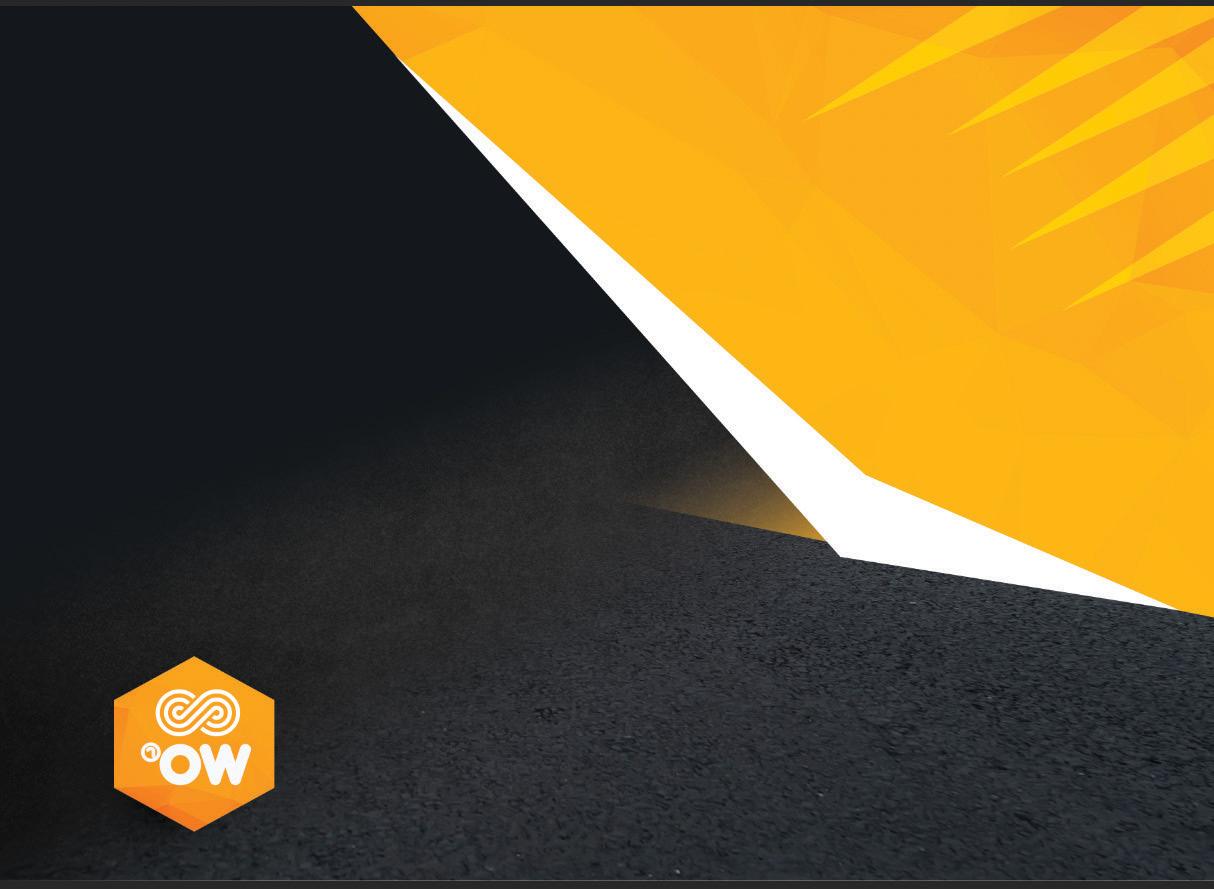







Bakers eld CA • Five Points CA • Fresno CA • Salinas CA Los Angeles CA • Yuma AZ




www.punjabitruckingusa.com July - September 2023 25 NEW EPISODES, EVERY WEEK For Advertisement and Sponsorships Send inquiries to info@ramandhillonshow.com (559) 701-8000
Texas Blessed as Autonomous Truck Developers Test New Technologies
Famous American frontiersman Davy Crockett once said, “You may all go to hell, and I will go to Texas.” Likewise, today’s autonomous truck developers have made the vast highways of Texas the testing grounds for their new technology. Companies such as Volvo, Gatik, TuSimple and Einride have all set up shop in North Texas near Fort Worth.
Why Texas?
North Texas is particularly inviting to driverless truck testers because of its central location on the transportation network, long stretches of highway and, possibly most important of all, the state’s loose regulations. Unlike California, where the state’s assembly has recently passed a law which would ban testing of driverless trucks unless there is someone in the cab (the bill still needs the support of the state’s senate and governor) Texas has no such restrictions.
In April, Volvo Autonomous Solutions opened an office in Fort Worth and plans to partner with Aurora Innovation Inc. to put a fleet of autonomous trucks on one lane delivering between Fort Worth and El
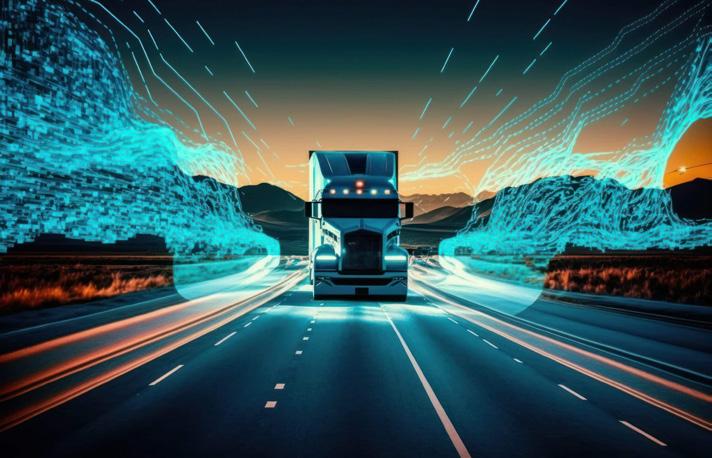
Paso and another between Dallas and Houston.
AllianceTexas
Just a few miles up the road from Fort Worth, the planned community of Alliance, Texas regards itself as a global logistics hub labeled the AllianceTexas Mobility Innovation Zone which encourages testing, scaling, and commercialization of new technologies such as autonomous vehicles.
Middle mile autonomous deliverer Gatik, which also has offices in Palo Alto and Toronto, expanded to Alliance two years ago and currently operates deliveries to Sam’s Club warehouses throughout the Dallas-Fort Worth area. Its new partnership with Kroger grocery stores has driverless trucks delivering goods from customer fulfillment centers to Kroger stores across North Texas.
Even troubled San Diego-based TuSimple, which has had front office upheaval in recent months, has set up shop in Alliance, as has the Swedish company Einride. With all of these companies, a human is in the cab, for now.
“DFW (Dallas/Fort-Worth) has really become the spot for autonomous trucking in the U.S.,” said Ian Kinne, director of logistics innovation at AllianceTexas developer Hillwood. He notes that Texas is attractive to selfdriving truck innovators because of its high volume of freight and the state’s lack of regulatory oversight.
On Interstate 45 between Dallas and Houston both Google subsidiary Waymo and California-based Kodiak Robotics have been testing autonomous trucks along the 240-mile route which features plenty of empty stretches, making it a less than desirable road for many human drivers.
Critics
One expert, however, disagrees with the Texas approach to driverless vehicles. Carnegie-Mellon University professor Phillip Koopman has recently written the book, How Safe is Safe Enough: Measuring and Predicting Autonomous Vehicle Safety. Koopman has been studying driverless technology for 25 years.
On Texas’ decision to avoid
www.punjabitruckingusa.com July - September 2023 26
INDUSTRY NEWS
regulations on self-driving vehicles, Koopman said, “The government probably made that decision for jobs and economic growth. But the cost of that decision is you’re potentially putting other road users at risk, and there’s no way to figure out how safe it is. That’s the trade-off that’s been made.”

Obviously, the investors of these companies hope for future profits, which Koopman says, puts pressure on companies to make progress.
“One hopes the companies are responsible,” Koopman said. “Some have proven they are. Some have proven they are not. Under that kind of financial pressure, even the best leadership might find themselves with pressure to deploy even if they’re not ready. That’s a tough position to be in.”
How does a robot truck work?
Most developers use computer mapping to plan the route of a driverless truck. Sensors gather data while on the road and store that information to better travel the same route again.
At Volvo, the company can then simulate pop-up scenarios that would alter road conditions. These changes might include construction zones, weather, and obstacles such as pedestrians or animals.
Caren Wende, Volvo’s head of marketing and communications, said “We repeatedly train the virtual driver and hardware on these different scenarios and validate the results with real-world driving so we know that the vehicle will behave safely in these situations.”
At Gatik, its short-haul trucks are in constant communication with the company’s remote monitoring centers where employees watch over each truck and can provide remote assistance when needed.
Richard Steiner, head of policy and communications, said “Gatik’s remote supervision system has been developed to leverage human intuition, which ensures our autonomous fleet remains fundamentally independent, while safeguarding certain advantages of human-to-vehicle collaboration.”
Despite these innovations, Koopman continues to argue that we just don’t have enough knowledge to know whether autonomous trucks are safer or as safe as human drivers. He said, “They could be safer. I’d be delighted if they were, but we don’t know. We can’t set policies assuming they’re safer because there’s no data.”
Regardless, some companies such as Gatik have already gone fully autonomous (no human in the cab) in Canada and in Arkansas where it has partnered with Canadian grocer Loblaw and retail giant Walmart.
“Safety is table stakes, front and center of everything we do,” said Steiner. “It runs deep within the fabric of the company. We always commence operations with a safety driver on board for safety, validation, and verification purposes as we ramp up towards driver-out on every single new route.”
HIRING DRIVERS MADE EASY!
$29.99
www.punjabitruckingusa.com July - September 2023 27 TRUCKING NEWS
According to investment bank and financial services company Morgan Stanley, 18 of the 21 trucking firms it consistently follows will miss earnings estimates for the second quarter of this year (April-June). The good news, however, is that for most trucking companies it is the bottom of the cycle, and the rest of the year looks slightly better, or at least back to normal.
The news is not a surprise as top full truckload (TL) carrier KnightSwift recently announced its operating margin was down by about one thousand basis points year over year, saying it has experienced “persistently soft demand.”

“The quarter began with most companies reporting on 1Q calls that there was virtually no spring seasonal pickup and while this improved somewhat going into the end of the quarter, the lift was likely too little, too late to save the quarter,” said Ravi Shanker, Morgan Stanley transportation equities analyst.
Shanker does see some improvement and believes that if the trend continues trucking companies will “sound more confident in underwriting a 2H restocking driven upcycle, though the magnitude of the bounce may still be TBD.”

He also labeled the second quarter as “the storm before the calm” as spot
rates remain flat and cost savings by the major companies were put into full effect to avoid losses.


In the second half of this year, Shanker predicts TL companies should see better prospects while less-thantruckload (LTL) carriers could be in for continued softness in the market. Shanker said, “LTL stocks may have the most to lose this earnings season.”
Likewise, third party logistics companies could see a tougher second half of 2023, especially if spot rates rise. Higher spot rates would make brokers pay up for capacity compared to their contractual agreements where rates are determined year over year with high single to low double digits.
www.punjabitruckingusa.com July - September 2023 28 Morgan Stanley Predicts Tough Second Quarter for Trucking Companies 916-329-8087 6725 Fleming Ave, Sacramento, CA 95828 Fax: 866-912-3929 | bplabservices@outlook.com DRUG TESTING (DOT) FOR TRUCKERS - DRUG TESTING - RANDOM ENROLLMENT - DOT DRUG COMPLAINCE INDUSTRY NEWS



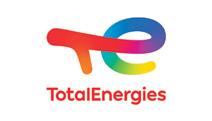

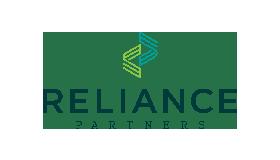
www.punjabitruckingusa.com July - September 2023 29
Brokerage Terms Remain Unchanged in New Final Regulatory Guidance
Definitions for the term’s “broker” and “bona fide agents” remain mostly unchanged in the final regulatory guidance from the Federal Motor Carrier Safety Administration (FMCSA). Brokers have come under scrutiny in recent years because of fraud committed by individuals posing as brokers and cheating carriers.
Language in the 2021 Bipartisan Infrastructure Act mandated FMCSA to review and clarify the definitions of “broker” and “bona fide agents.” The agency was asked to consider the impact of new technology, especially since many carriers have adopted digital freight brokerage software, on how brokers do business.

The final guidance indicated the definition of “broker” in current federal regulations is adequate. In fact, a cumbersome rule making process would be needed to make major changes to the definition.
“Handling money exchanged between shippers and motor carriers is one factor that strongly suggests the need for broker authority, but it is not an essential requirement for one to be considered a broker,” the agency said in a recent announcement.
As for bona fide agents, the agency determined that role could be played by an employee of a motor carrier or contractor and should perform its job in a pre-written contract between shipper and carrier.
“While FMCSA has determined that the definition of ‘bona fide agent’ is adequate, FMCSA clarifies that the term ‘allocating traffic,’ which appears in the definition, means any exercise of discretion on an agent’s part when assigning a load to a motor carrier,” said FMCSA. “If an entity representing more than one carrier exercises such discretion, it would not meet the
definition of ‘bona fide agent.’”
To clarify further, FMCSA said, “If a bona fide agent represents only one motor carrier, it will assign all loads it sources to that particular carrier and thus, no exercise of discretion is necessary, and there is no dispute that the agent is not a broker. However, an agent representing multiple carriers should be careful to structure its agreements to avoid the possibility of allocating traffic.”
Some industry analysts believe this is a good first step but more needs to be done to protect trucking companies. Transportation Intermediaries Association (TIA) Vice President of Government Affairs Chris Burroughs said, “As we said when the FMCSA released its interim guidance, we thought it was a positive first step, but the guidance did not go far enough to address the growing concern of unlawful brokerage activities in the marketplace.”
He concluded, “The final guidance reaffirms that statement, and the association will now strategize how to improve on it so that it creates a level playing field for licensed entities that are doing business the right way.”
American Trucking Associations commended FMCSA for reaffirming the current definition of broker. They also found appropriate the idea that the “fundamental nature of brokerage is not impacted by changing technology.”
TIA has been
sounding the alarm for a few years about the increase in unlawful brokerage firms. These fake companies are without proper registration and do not comply with regulatory requirements.
The infrastructure bill also asked FMCSA to examine the role of dispatch services and the extent to which they can be considered brokers or bona fide agents, and to clarify the level of financial penalties for unauthorized brokerage activities applicable to a dispatch service. FMCSA, however, indicated investigating dispatch services was not part of their regulatory scope.
“The existing registration statutes do not authorize FMCSA to regulate any entity in the transportation industry other than motor carriers, brokers and freight forwarders,” FMCSA said. “If a dispatch service or other entity does not meet the criteria for inclusion in one of these categories, FMCSA is unable to require registration or otherwise regulate that entity.”
www.punjabitruckingusa.com July - September 2023 30 INDUSTRY ARTICLE
nvIN PweInl rYgUlytrI gweIfYNs Anuswr bRokryj
dIAW SrqW nhIN bdlIAW
PweInl rYgUlytrI gweIfYNs Anuswr
bRokryj Sbd dy "bRokr" Aqy "bonPweIf
eyjMt" leI SrqW izAwdwqr nhIN
bdldIAW[ lokW duAwrw dlwlW Aqy
DoKwDVI vwly kYrIAr dy rUp iv~c kIqI
geI, bRokr ny hwl hI iv~c DoKwDVI jWc dy Gyry iv~c ilAWdI hY[
2021 iv~c do-p~KI buinAwdI FWcw
AYkt ny FMCSA ƒ "bRokr" Aqy
"bonPweIf eyjMt" dIAW SrqW dI smIiKAw
krn Aqy sp~St krn leI lwzmI kIqw
hY[ nvIN tYknwlojI Anuswr eyjMsI ƒ kMm
krn bwry ikhw igAw sI[ ifzItl Pryt
bRokryj soPtvyAr ƒ bhuq swry kYrIArW ny
ApxwieAw hY, ies leI ik bRokr Awpxw kwrobwr ikvyN krdy hn[
PweInl gweIfYNs ny sMkyq id~qw hY ik mOjUdw sMGI inXmW iv~c "dlwl" dy keI ArQ hn[ Asl iv~c pirBwSw iv~c v~fIAW qbdIlIAW krn leI ie~k s^q inXm bxwaux dI pRikirAw dI loV hY[
ie~k qwzw GoSxw dOrwn eyjMsI ny suJwA id~qw hY ik, "iS~prW Aqy motr kYrIArW ivckwr pYsy dw lYx-dyx, bRokr AQwrtI dI zrUrq ƒ drswauNdw hY[ eyjMsI ny qwzw
GoSxw dOrwn, ieh vI ikhw hY ik ieh ie~k zrUrI loV nhIN hY ik iksy ƒ ie~k fIlr
ƒ r~K ky pYsy dw Awdwn-pRDwn kIqw jwvy[
eyjMsI ny ieh inrDwirq kIqw ik ij~QoN q~k shI eyjMtW dI g~l hY ieh BUimkw ie~k motr kYrIAr jW Tykydwr dy ie~k krmcwrI duAwrw inBweI jw skdI hY[ iesƒ iSpr Aqy kYrIAr dy ivckwr ie~k pUrv-ilKq iekrwrnwmy dOrwn kMm krnw cwhIdw hY[
“
FMCSA ny ieh inrDwirq kIqw hY ik 'bonPweIf eyjMt' dI pirBwSw kw&I hY[ FMCSA sp~St krdw hY ik SrqW iv~c pRgt hox vwly 'trYiPk dI vMf' Sbd dw mqlb hY motr kYrIAr ƒ lof dyx vyly eyjMt dy p~K ƒ pUrn krnw[ "jykr ie~k qoN v~D kYrIArW dI numwieMdgI krn vwlI iekweI Aijhy AiDkwr dI vrqoN krdI hY, qW ieh 'bonPweIf eyjMt' dI pirBwSw ƒ pUrw nhIN krygI["
FMCSA ny vDIAw qrIky nwl spS~t kridAW ikhw ik, “jykr ie~k eyjMt isrP ie~k motr kYrIAr dI numwieMdgI krdw hY, qW bwkI swry lof sroqW ƒ aus Kws kYrIAr ƒ sONp dyvygw Aqy ies ivSy

qy koeI vI g~lbwq krnw
zrUrI nhIN smiJAw
jWdw Aqy eyjMt nw hox
qy koeI muSikl nhIN hY[
hwlWik, dlwl jW eyjMt
ƒ ie~k qoN v~D kYrIArW
dI numwieMdgI krn vwlI
tRYiPk dI vMf dI sMBwvnw
qoN bcx leI Awpxy
smJOiqAW ƒ bxwaux leI
swvDwn rihx dI loV
hY["
pRDwn hn ny ikhw ik "jdoN FMCSA ny
AwpxIAW PweInl gweIfYNs jwrI kIqIAW
qW AsIN soicAw ik ieh ie~k skwrwqmk
pihlw kdm sI, pr ieh gweIfYNs
mwrkIt plys iv~c gYr kwƒnI dlwlI
dIAW gqIivDIAW dI v~D rhI icMqw ƒ h~l krn leI kw&I nhIN hY["
FMCSA ny is~tw k~iFAw ik "PweInl gweIfYNs aus ibAwn dI puStI krdw hY ik
AYsosIeySn hux Xojnw bxweygI ik ies
iv~c ikvyN suDwr kIqw jwvy qW jo ieh lwiesMsSudw sMsQwvW leI ie~k vDIAw ivDI bxwvy, jo shI qrIky nwl kwrobwr kr rhIAW hn["
bRokr dI mOjUdw pirBwSw dI muV puStI krn leI AmrIkn tr~ikMg AYsosIeySnW ny FMCSA dI SlwGw kIqI[ auhnW ny ieh vI ikhw ik "dlwlI dI hux vwlI pirBwSw ƒ bdldI tYknoljI nwl koeI Prk nhIN pYNdw["
TIA dy Anuswr gYr-kwƒnI dlwlI PrmW dy vwDy bwry kuJ swlW qoN Awvwz auTweI jw rhI hY[ ieh PrzI kMpnIAW rijstRySn qoN ibnW hn Aqy rYgUlytrI loVW dI pwlxw vI nhIN krdIAW[
ies ib~l Anuswr FMCSA ifspYc syvwvW dI BUimkw dI jWc krygw Aqy iksy h~d q~k dlwl jW eyjMtW ƒ shI mMinAw jwvygw[ ifspYc syvw 'qy lwgU AxAiDkwrq dlwlI gqIivDIAW leI iv~qI zurmwny dy p~Dr ƒ sp~St krn leI vI ikhw hY[ hwlWik FMCSA, ny sMkyq id~qw hY ik ifspYc syvwvW dI jWc krnw auhnW dy rYgUlytrI dwiery dw ih~sw nhIN[
kuJ audXog mwhrW
dw mMnxw hY ik ieh
ie~k cMgw kdm hY pr
tr~ikMg kMpnIAW dI
sur~iKAw leI Ajy bhuq
kuJ krn dI loV hY[ ikRs
buroz jo ik trWsportySn
ieMtrmIfIArIz
AYsosIeySn (TIA) dy
srkwrI mwmilAW dy aup
FMCSA ny ikhw ik auhnW ƒ motr kYrIArW, dlwlW Aqy Pryt Pwrvrf qoN ielwvw AwvwjweI audXog iv~c iksy vI iekweI ƒ inXmq krn leI "mOjUdw rijstRySn kwƒn" AiDkwrq nhIN krdy[" FMCSA ny ikhw ik "jykr koeI ifspYc syvw jW hor iekweI iehnW SRyxIAW iv~coN iksy ie~k vI mwpdMfW ƒ pUrw nhIN krdI hY, qW FMCSA rijstRySn pRwpq nhIN kr skdw[
www.punjabitruckingusa.com July - September 2023 31 INDUSTRY NEWS
ATRI Study Shows Trucking Industry Lost Over 100,000 drivers to Marijuana Impairment Since 2020
Anew report from the American Transportation Research Institute (ATRI), “Impacts of Marijuana Legalization on the Trucking Industry,” responds to the increasing acceptance of marijuana usage in the U.S. and its consequences for truck drivers. Currently, 23 states representing about half of the U.S. population have made recreational marijuana legal.
The report indicates that “more than 100,000 drivers tested positive and were removed from duty” in the last three years. Many of those drivers have not returned. The report places most of the blame on increased legalization and acceptance of marijuana throughout the nation.
“Based on Drug and Alcohol Clearinghouse data, marijuana use clearly has an impact on the availability of truck drivers,” the report said. “Data confirms that most have not completed the return-to-work process and instead opt to remain outside of the interstate trucking industry.”
The report continues, “Furthermore, truck drivers who do successfully return to duty may still find it difficult to find truck driving employment, based on carrier survey data indicating that a segment of carriers will not hire truck drivers who have tested positive.”
The report also documents the
frustration of many in the industry over testing. There is no definitive realtime testing for marijuana impairment. Enforcement officers are still limited to standardized field sobriety testing (SFST).
The report said, “The Governors Highway Safety Association (GHSA) indicates that “every state has laws dealing with alcohol-impaired driving and drug-impaired driving. But unlike the laws for drunk driving, those that address drugged driving are nuanced, difficult to enforce and prosecute, and vary substantially by state.”
Most tests for driver impairment were designed for alcohol related incidences and they often do not detect marijuana impairment. Blood and metabolite tests are more accurate but there is currently a lack of uniformity for those tests from state to state.
The report indicates, “There are severe challenges to overcome with biological measurements of marijuana driving impairment, and, while current behavior-based SFSTs have been shown to lack sensitivity to marijuana impairment, this approach may be the standard if biology-based impairment tests are not developed.”
Because of current trends in state legalization, and the possibility that federal legalization is a possibility, the report concluded that unless laws
are changed, the trucking industry will continue to lose drivers. It proposes two “pathways” which the federal government can take on the issue.
First, it can basically do nothing and see thousands of drivers move out of the industry every year because of positive drug tests.
Second, it can ease restrictions and even remove marijuana from the list of Schedule I drugs—Schedule I drugs are deemed to have no medical use and are highly addictive. The argument for removing marijuana from this list is that the drug has been proven to provide medical solutions for some problems (such as relief from nausea caused by chemotherapy).
The report concludes, “Prior to any federal legalization action, the report identifies several protections that must be in place for employers in safetysensitive industries. These include the development of a nationally recognized marijuana impairment test and impairment standards, as well as provisions that protect a carrier’s ability to screen employees for drug use.”
ATRI also asks drivers to take the survey at the end of the report. The survey will only be “presented in an aggregated, non-identifying format.”
www.punjabitruckingusa.com July - September 2023 32 INDUSTRY NEWS
Underride Guards are Topic of New NHTSA Advisory Committee
According to the National Highway Traffic Safety Administration (NHTSA), nearly 100 Americans a year die when their passenger vehicle slides under the chassis of a commercial tractortrailer. Such crashes also cause over 400 serious injuries annually.

Because of these grim numbers, the agency has launched a committee of trucking industry and highway safety stakeholders to research side underride protection for commercial trucks. The Advisory Committee on Underride Protection has 16 members with an ultimate goal of providing a report to Secretary of Transportation Pete Buttigieg. It also fulfills a requirement in the 2021
In addition, the Biden administration has issued an advance notice of proposed rulemaking seeking public comments on the issue. There are no existing laws which require big trucks to install side underride guards.
The committee has representatives from a wide variety of areas of expertise, including owner-operators, insurance executives, researchers, accident reconstruction analysts as well as safety groups such as the
Commercial Vehicle Safety Alliance (CVSA). Representatives from the American Trucking Associations (ATA), trailer manufacturers Utility Manufacturing and Wabash, component-manufacturer Hendrickson USA, and the International Longshore and Warehouse Union are also on the committee.
The committee voted Adrienne Gildea, CVSA’s deputy executive director as the committee’s chair.
Most trucking advocates, including the ATA and the Owner-Operator Independent Drivers Association have looked skeptically on any law that would mandate side underride guards on heavy trucks.
“Our general stance on this is to look at preventing the crash from happening in the first place, versus mitigation after the fact,” said ATA Vice President of Safety Policy Dan Horvath. “Our fleet members are spending $10 billion annually on safety investments.”
OOIDA President Todd Spencer is on record opposing a mandate on guards. In April, after the announcement of the proposed
rulemaking, he said, “The rush to mandate every gadget marketed as a safety device over the objections of professional drivers is a major reason crash rates continue to rise.”
Spencer further noted that “Proponents of side underride guards have never demonstrated how these devices will perform in highway conditions, yet we’re wasting more time reviewing another potential regulatory mandate where the costs outweigh the benefits.”
He concluded, “To make matters worse, we now have an advisory panel in place that gives more influence to representatives who have no clue how to operate a heavy vehicle than those who understand the serious operational challenges and hazards created by side underride guards. Are we the only ones who see why this is not the way to develop sound regulations?”
Committee member Lee Jackson, a traffic crash reconstruction expert, said, “Already we’re kind of bouncing around, and I just want to say that we really have to know the topic in advance and really stay on topic. Otherwise, we’re not going to get anything accomplished.”
www.punjabitruckingusa.com July - September 2023 33 INDUSTRY NEWS
kYl AsYNblI v~loN Awtonoms
tr~kW leI mnu~KI
sMcwlkW dI pUrqI
krn leI ib~l
pws kIqw igAw[
kYlIPornIAw styt AsYNblI ny hwl
hI iv~c AB 316 ib~l pws kIqw hY, ieh ie~k tImstrs XUnIAn smripq
ib~l hY[ ijs iv~c 10,000 pONf qoN
v~D vzn vwly iksy vI Awtonoms
(KudmuKiqAwrI vwhn) iv~c svwr
hox leI ie~k isKlweI pRwpq mnu~KI
Awprytr dI loV hovygI[ ieh ib~l
Kws qOr qy jnqk sur~iKAw, nOkrI
dI sur~iKAw Aqy buinAwdI FWcy dIAW
loVW iDAwn iv~c r~Kdy hoey pws kIqw igAw hY[
ivDwn sBw iv~c do-p~KI 69-4
votW nwl pws hox vwlw ib~l hux rwj
dI sYnyt iv~c jwvygw[ kwƒn bxn
leI sMsQw dy smJOqy dy nwl-nwl
rwjpwl qoN dsqKq lYxy vI zrUrI huMdy hn[ kYlIPornIAw ifpwrtmYNt Aw& motr vhIklz (DMV) ie~k rYgUlytrI Prymvrk 'qy ivcwr kr irhw sI, audoN ieh ib~l ilAWdw igAw sI[ ies ib~l nwl 10,000 pONf qoN v~D dy Awtonoms vwhnW (AV) ƒ ivDwn sBw dI sihmqI qoN ibnW, Agly swl kYlIPornIAw dIAW sVkW dI vrqoN krn dI iejwzq hovygI[
ib~l dI lyKk qy AsYNblI mYNbr sysIlIAw AYguAwr-krI (fI-ivMtrz) ny ikhw "mYN bhuq KuS hW ik myry 60 qoN v~D AsYNblI swQIAW ny A~j dy ies ib~l AB 316 dw smrQn kIqw[ auhnW ikhw ik tImstr Aqy lybr PYfrySn dy nwl ieh sWJw Xqn krky ivDwn sBw iv~c ies ib~l ƒ r~iKAw igAw[
AB 316 ib~l DMV ƒ Awtonoms hYvIifaUtI tr~kW dI jWc krn dI iejwzq dyvygw[ ieQy ieh lwzmI hovygw ik iehnW tr~kW iv~c hmySw ie~k ivAkqI kMm kr irhw hovy[ ies PYsly nwl keI AsYNblI mYNbr DMV vloN Awtonoms vwhnW bwry ley PYsilAW qoN AsMquSt hn[
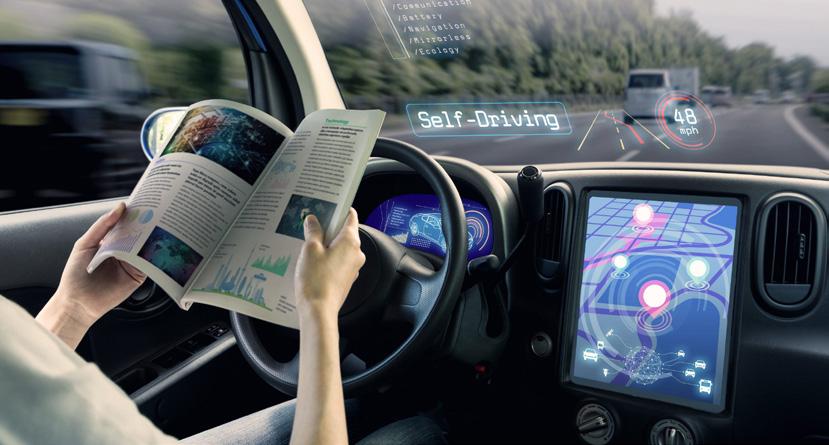
AsYNblI mYNbr lOrw PrIfmYn (fIglynfyl) ny ikhw ik "bdiksmqI nwl, fIAYmvI ies smyN sVkW 'qy Awtonoms vwhnW nwl hox vwlIAW sm~isAwvW dw pqw lgwaux iv~c AsPl rhI hY[ auhnW ny ieh ieSwrw vI kIqw ies nwl kuJ sm~isAwvW ho skdIAW hn, sVk ivckwr ru~k jwxw
jW sVk iknwry qy KVy AYmrjMsI vwhnW nwl tkrw jwxw[
tImstrz XUnIAn ny ies ƒ sUby dy tr~k frweIvrW dI ij~q d~isAw[ pItr iPn, tImstrz dy p~CmI Kyqr dy aup pRDwn ny ikhw ik, "swfy ivcwr iv~c, Awtonoms vwhn, m~D-SRyxI dIAW nOkrIAW leI is~Dw ^qrw hn[" "auhnW ikhw ik ieh KudmuKiqAwr vwhn ikauN bxwey jw rhy hn Aqy v~fIAW kwrporySnW ies qknwlojI dI vrqoN ikauN krnw cwhuMdIAW hn ? iesdw audyS isrP mzdUrI dI lwgq ƒ Gtwauxw["
hwlWik, Awtonoms vwhn audXog dy mwhrW ny ib~l ƒ guMmrwh krn vwlw ib~l d~isAw hY Aqy ikhw ik ieh kYlIPornIAw ƒ
AwriQk qOr 'qy nukswn phuMcweygw[ dUjy pwsy mwhrW dw ieh vI kihxw hY ik frweIvr rihq tr~k pihlW hI Arknsws, tYksws Aqy nyvwfw iv~c sVk 'qy hn Aqy Awtonoms tr~k mnu~KI sMcwilq vwhnW nwloN vDyry sur~iKAq ho skdy hn ikauNik auh tr~k clwauNdy smyN mobweIl Pon dI krn Aqy Kwx-pIx vrgy ivvhwrW kwrn mnu~K vloN ho rhIAW glqIAW ƒ dUr krdy hn[
muP~dl AYzI, tYknwlojI kMpnI Arorw leI styt pbilk APyArz dy sInIAr fwierYktr ny ikhw ik, "mYƒ lgdw hY ik jo Aksr bihs iv~c guAwc jWdw hY, aus nwl mnu~KI-sMcwilq siQqI bhuq hI duKdweI Aqy ivgV jWdI hY[" ies nwl Awtonoms tr~kW dw ies 'qy pRBwv pYNdw hY["
www.punjabitruckingusa.com July - September 2023 34
ieMfstrI inaUz
Cal Assembly Passes Bill to Require Human Operator in Autonomous Trucks
Noting that it is prioritizing public safety, job security and infrastructure needs, the California State Assembly recently passed AB 316, a Teamsters’ union supported bill that would require a trained human operator to be onboard any autonomous vehicle weighing over 10,000 pounds.
The bill, which passed in the assembly with a bipartisan 69-4 vote, will now move to the state’s senate and must get that body’s agreement as well as a signature from the governor to become law.
The bill comes just as the California Department of Motor Vehicles (DMV) is considering a regulatory framework that would allow for autonomous vehicles (AV) over 10,000 pounds to use California roads as soon as next year without consent from the legislature.
"I am thrilled that over 60 of my Assembly colleagues supported AB 316 on the floor today. This joint effort with the Teamsters and Labor Federation will slow the profit-
motivated drive to human-less trucking by putting the Legislature between venture capital, well-paid jobs, and public safety," said the bill’s author Assemblymember Cecilia Aguiar-Curry (D-Winters).

AB 316 would not stop the DMV from permitting the testing of autonomous heavyduty trucks but would mandate that the trucks always have a human in the cab. Several assembly members have been dissatisfied with the DMV’s decisions regarding autonomous vehicles.
“Unfortunately, the DMV has failed to keep track of problems that are occurring right now with the autonomous vehicles that are on the road,” said Assemblymember Laura Friedman (D-Glendale), pointing out the problems that have occurred with driverless cars, including shutting down in the middle of the street or crashing into roadside emergency vehicles.
The Teamsters’ Union called the vote a victory for the state’s truck drivers. “In our view, autonomous vehicles are a direct
threat to good, middle-class jobs,” said Peter Finn, western region vice president for the Teamsters. “The purpose of why these autonomous vehicles are being created and why big corporations want to use this technology is for one reason only, and that’s to cut their labor costs.”
Autonomous vehicle industry experts, however, called the bill misguided and say it will hurt California economically. Driverless trucks are already on the road in Arkansas, Texas, and Nevada. Experts argue that autonomous trucks can be safer than human driven vehicles because they eliminate human errors caused by distracted behaviors such as texting and eating.
“I think what’s oftentimes unfortunately lost in the debate is that this human-driven status quo is incredibly tragic and getting worse,” said Mufaddal Ezzy, senior director of state public affairs for technology company Aurora. “There’s an opportunity here for autonomous trucks to really help make an impact on that.”
www.punjabitruckingusa.com July - September 2023 35 TRUCKING NEWS
New Study Shows Hair Testing Reveals Far More Positives for Dangerous Drugs
According to new data from a research team at the University of Central Arkansas, hair follicle testing discovers ten times more positive results for drugs such as marijuana, cocaine and methamphetamine when compared with urine testing.
The new study is part of an industry backed multi-year project commissioned by the Trucking Alliance which has tested nearly one million drivers in the last five years. The new study found that hair tests reveal more positive results across all drugs, in every age range, and in every state.
The Trucking Alliance, which is made up of ten of the largest trucking companies in the U.S. including Knight, Swift and J.B. Hunt argues the results prove that the Department of Transportation should be using hair testing exclusively in pre-employment drug screening.
Federal regulations do not allow trucking companies to
submit hair test results to the Federal Motor Carrier Safety Administration’s Drug and Alcohol Clearinghouse without also providing positive urine or saliva tests.
The study compared the differences between results from hair and urine tests given to nearly 90,000 drivers. The number of positives from hair testing was startling. For example, hair tests for marijuana revealed 2,123 positives while the urine tests identified only 292 positives, a difference of 1,831. Similar results were shown for other drugs.
“This study concludes that our family and friends are driving alongside thousands of truck drivers who use illegal drugs,” said Trucking Alliance Managing Director Lane Kidd. “If airline pilots had similar drug test data, all planes would be grounded.”
One of the researchers, Doug Voss, a professor of Logistics and Supply Chain Management, believes the study should provide proof that hair testing is essential for the trucking industry. Previous research by Voss and his team have predicted that if every truck driver had to take a hair follicle test, over 275,000 would be taken off the roads.
Some groups, however, have questioned the Trucking Alliance study. The Owner-Operator Independent Drivers Association (OOIDA) has contended past studies from the Trucking Alliance on hair testing lacked validity.

In response to the new research results, OOIDA said, “We suspect these latest findings are the result of more dubious research,” OOIDA said in response. “They’re probably hoping no one takes a closer look, but that’s exactly what OOIDA will do to expose the flimsiness of their claims.”
OOIDA argues there “are still unresolved scientific and technical questions for this method of drug-use detection.” Proposed guidance on hair testing from the Department of Health and Human Services is expected to be issued this year.
www.punjabitruckingusa.com July - September 2023 36 INDUSTRY NEWS
nvIN irsrc muqwibk vwlW dI tYsitMg nwl Kqrnwk dvweIAW
leI bhuq izAwdw skwrwqmk nqIjy swhmxy AwauNdy hn
ie~k Koj tIm dy nvyN AMkiVAW dy Anuswr, ipSwb dI jWc dy mukwbly vwlW dy PolIkl tYsitMg dy mwirjuAwnw, kokIn Aqy mYQYNPytwmweIn vrgIAW dvweIAW
leI ds guxw izAwdw positv nqIjy swhmxy AwauNdy hn[ sYNtrl Arkwnsws
XUnIvristI dI Koj tIm ny ieh q~Q pyS kIqy hn[
tr~ikMg AlwieMs vloN SurU kIqI geI
nvIN irsrc muqwibk audXog smriQq
bhu-swlw pRojYkt dw ih~sw hY, ijs ny
ipCly pMj swlW iv~c lgBg 10 l~K

frweIvrW dI jWc kIqI hY[ nvIN irsrc
iv~c ieh vI pwieAw igAw hY ik vwlW
dy tYst nwl swrIAW dvweIAW iv~c, hr
aumr sImw iv~c Aqy hr rwj iv~c bhuq vDIAw nqIjy Awey hn[
tr~ikMg AlwieMs AmrIkw dIAW d~s sB qoN v~fIAW tr~ikMg kMpnIAW dw bixAw hoieAw smUh hY, ijnHW iv~c nweIt, sivPt Aqy jy.bI. hMt smyq hor kMpnIAW dw Swiml hn[ auhnW ny ieh dlIl id~qI hY ik nqIjy ieh swbq krdy hn ik trWsportySn ivBwg ƒ pUrv-ruzgwr fr~g skRIinMg leI ivSyS qOr 'qy vwlW dI jWc krn ƒ XkInI bxwauxw cwhIdw hY[
tr~ikMg kMpnIAW ƒ sMGI inXm Anuswr PYfrl motr kYrIAr syPtI
AYfiminstrySn dy fr~g Aqy Alkohl klIAirMghwaUs ƒ ipSwb jW Qu~k dy tYst qoN ielwvw vwl tYst dy nqIjy jmHW krn dI pRvwngI nhIN idMdy[
irsrc Anuswr qkrIbn 90,000 frweIvrW vloN id~qy vwlW Aqy ipSwb tYstW dy nqIijAW ivckwr AMqr ƒ dyiKAw igAw[ ijs iv~c positv dI igxqI hYrwn krn vwlI sI[ audwhrn vjoN, mwirjuAwnw dy pRBwvW leI vwlW dy tYstW ny 2,123 positv nqIjy swhmxy
Awey, jdoN ik ipSwb dy tYstW iv~c isrP 292 positv pCwxy gey, iehnW iv~c 1831 dw AMqr sI[ hor dvweIAW leI vI Aijhy nqIjy idKwey gey[
lyn ikf jo ik tr~ikMg AlwieMs dy mYnyijMg fwierYktr hn ny ikhw hY ik "swfw pirvwr Aqy dosq hzwrW tr~k
frweIvrW dy nwl AwpxI g~fI clw ky kwrobwr kr rhy hn rhy hn, jo gYrkwƒnI dvweIAW dI vrqoN krdy hn[ jy eyArlweIn dy pwieltW kol fr~g tYst dy shI AMkVy huMdy, qW swry jhwzW ƒ ies kMm dw AwDwr bxw id~qw jwvygw["
pRoPYsr, f~g vOs lOijsitks Aqy splweI cyn mYnyjmYNt dy ie~k pRoPYsr qy KojkrqwvW dw mMnxw hY ik ies irsrc
ƒ ieh sbUq pyS krnw cwhIdw hY ik
tr~ikMg audXog leI vwlW dI jWc zrUrI hY[ vOs Aqy ausdI tIm duAwrw kIqI geI ipClI Koj ny Biv~KbwxI kIqI hY ik jykr hr tr~k frweIvr ƒ vwlW dy PolIkl tYst krvwauxw pYNdw hY, qW 275,000 qoN v~D lok ies qoN pRBwivq hoxgy[
tr~ikMg AlwieMs irsrc qy kuJ smUhW ny svwl auTwey hn[ mwlk-Awprytr ieMfIpYNfYNt frweIvr AYsosIeySn
(OOIDA) ny tr~ikMg AlwieMs qoN vwlW dI jWc 'qy ipCly irsrc dOrwn jwxkwrI dI Gwt dw dwAvw kIqw hY[ OOIDA ny nvIN Koj nqIijAW dy jvwb iv~c ikhw, "swƒ S~k hY ik ieh qwzw KojW vDyry S~kI Koj dw nqIjw hn,"[
ies Koj Anuswr Swied aumId kr rhy hn ik ies Koj nwl koeI vI iesdy q~QW ƒ nyiVEN nhIN dyKdw, pr OOIDA auhnW dy iehnW dwAivAW dI mwmUlI ƒ bynkwb krn leI kMm krygw["
OOIDA ny dlIl id~qI hY ik "nSy dI vrqoN dw pqw lgwaux dI ies ivDI
leI Ajy vI AxsulJy hoey ivigAwnk Aqy qknIkI svwl hn[" ishq Aqy mnu~KI syvwvW ivBwg v~loN vwlW dI jWc bwry pRsqwivq gweIfYNs ies swl jwrI hox dI Aws hY[
www.punjabitruckingusa.com July - September 2023 37
TRUCKING NEWS
Battery Swapping Could be Future for Electric Vehicles
As the U.S. transportation sector transitions from gasoline powered cars and trucks to electric battery vehicles, at least one startup is providing a potential solution to the problem of charging the batteries for all of these vehicles.

San Francisco-based Ample Inc. is leading the way in using battery swapping as a way to get EV’s back on the road in as little as five minutes. The idea is not a new one. About ten years ago another company, Better Place, thought that simply swapping out batteries in a matter of moments would be more appealing to motorists than waiting hours for their dead battery to gain a full charge.
Better Place even collected nearly a billion dollars in funding for the idea, getting investments from Morgan Stanley and General Electric. Although the company was way ahead in developing new technology, it was, unfortunately, probably too far ahead of its time. It turned out the Better Place’s sophisticated swapping stations could only work with one model of car.
At the same time, Tesla had just built a network of fast charging stations that worked for their cars, which remain the highest selling EV on the market in the U.S.
Ample, however, believes it has solved that problem by partnering with various EV makers to develop interchangeable battery packs and a uniform plate which holds the battery in place. In May of this year the company showed off one of its new high tech swapping stations at a warehouse in San Francisco.
A car drives into the demo station where it is raised a few feet off the ground while a robot slides under and determines the location and configuration of the car’s battery. The robot unlocks the spent battery, shuttles it away and then brings back a fully charged battery. The car is lowered and on its way. The process takes five minutes.
The stations cost about $100,000 and fit in a shipping container. There are now over a dozen Ample stations in the Bay Area and Europe. The stations change about two-hundred batteries a day, mostly from Uber drivers who have Nissan Leafs or Kia Niros.
In addition to working with these two brands, the company has partnerships with other EV makers. Parked in the warehouse during the recent demonstration were a Fiat 500 and a Citroen van made by Stellantis, along with the Niro, a Nissan Leaf,
Fisker Inc.’s Ocean SUV and an urban mini-car made by German manufacturer e.Go.
Ample Co-Founder Khaled Hassounah wants his company to be the “gas station of electric.” He said, “We’re going to be a lot cheaper than fast charging. If you can charge at home, you should. But if you park on the street, if you live in a condo building or drive for a fleet, that’s not possible.”
Another big advantage to Ample’s business model is that it puts less stress on the electrical grid than fast charging stations. After Ample replaces a battery, it slow charges it over several hours. This has led government agencies who are scrambling to find more energy sources to embrace Ample’s model.
“We have this dense urban environment, very crowded streets and competing desires for electrical grid capacity as well as just for curb space,” said Tyrone Jue, San Francisco’s chief climate and sustainability officer. “If we’re going to say that every home needs a charger and every home needs to upgrade their circuit panel, we’re not going to reach our climate goals,” he added.
www.punjabitruckingusa.com July - September 2023 38
INDUSTRY NEWS April - June 2023


www.punjabitruckingusa.com July - September 2023 39 BI RI TIRES & ALIGNMENT CALL : 559-905-9595 Authorized Dealer for Truck & Trailer Repairs & Alignment Shocks - Brakes - New & Used Tires CALL : 559-499-0195 Ramanpreet Singh email: bigrigtiresandalignment@gmail.com 2881 E Jensen Ave. Fresno CA 93706 Educat on - Ser vice - Suppor t ABI T J R N U U C P KIN N G ICA A R S E S O M C A I A H T T I R O O N N NAPTA R V E E N N T D R O A R P FREE ALIGNMENT & INSTALL ATION OF 10 TIRES * *PURCHASE OF 10 TIRES IS MUST. CONDITIONS APPLY TALK WITH US ABOUT OUR CUSTOM BENEFIT SOLUTIONS TO ATTRACT AND THEN RETAIN YOUR EMPLOYEES In 2018, the Nor th American Punjabi Trucking Association par tnered with Lotus Benefits Corp to of fer their member s a comprehensive benefits package that can't be found anywhere else. Lotus Benefits is a proud sponsor of NAPTA and with the help from the professionals at Lotus Benefits you can discover employee benefits packages that will retain your top talent. Lotus Benefits has a network of licensed health insurance experts who specialize in customizing packages to fit your employees' demographic needs. Benefits are available to vendors and other NAPTA sponsors with employers of any size Discuss your company, budget and your employee's specific healthcare needs with an expert in the field. Review a personalized report for your company with different provider plans and network types. Communicate your plan selection and we take care of the rest. 1(855) GoLotus (465-6887) | 805-915-4770 1919 Williams Street, Ste 301, Simi Valley CA 93065 CA LICENSE # OM73517 in f o@lo t usbene f i ts. co m ww w lo t usbene f i t s .c om
FMCSA Report Outlines the Agency’s Concerns About Third-Party CDL Test Administrators
In a new report to Congress from the Federal Motor Carrier Safety Administration’s Commercial License Division, the agency explains its decision not to issue a permanent waiver for flexibility on commercial driver’s license (CDL) knowledge tests and its plans for new testing oversight which it will reveal in an upcoming proposed rule.
At the height of the pandemic in April 2020, FMCSA provided a waiver allowing certified third-party skillstest instructors to also administer CDL knowledge tests without completing the training that is required for those who usually conduct the testing.
That waiver was intended to help state agencies which had experienced reduced staffing and closures caused by the pandemic. At a time when the nation needed new drivers on the road, it made sense to streamline the process by allowing third-party instructors to give the tests.
But, in the Ocean Shipping Reform Act of 2022, Congress required a report examining the impact of third-party skills test examiners.
In “The Third Party Commercial Driver’s License Skills Test Examiners Report to Congress,” FMCSA said its biggest concern about making the waiver permanent was a “lack of regulatory requirements for states to audit and monitor the operations of third-party knowledge examiners to ensure that third parties administer the knowledge tests equitably and without fraud, which requires regulatory oversight by states and, when applicable, FMCSA.”
According to the report, third-party examiners will need the same training and record-check requirements as the DMV employees who administer the tests.
The reports said, “Should the [waiver] be made permanent now,
without additional safeguards, the integrity of the CDL knowledge testing program, and the safety benefit derived from CDL knowledge testing, would be undermined by the absence of state oversight and training and qualification requirements for third party knowledge examiners.”
FMCSA is drafting a new rule that will propose minimum regulatory standards and safeguards for states that opt to allow knowledge testing by third parties.
“The proposed standards will include states’ examiner training and record check requirements, as well as the states’ required oversight and monitoring of third party testers and examiners,” the report said. The standards will apply to all third-party knowledge examiners, including any new third-party skills test examiners.

www.punjabitruckingusa.com July - September 2023 40
INDUSTRY NEWS
Daimler and Toyota Get Together to Create ‘Future of Commercial Vehicles’

In an effort to pursue the development of alternative power technologies, Toyota Motor Corp. and Daimler Truck Holding AG have agreed on a merger of Toyota’s Hino Motors and Daimler’s Mitsubishi Fuso.
The combination of the two heavy duty truck manufacturers into one publicly traded holding company will be owned jointly by Toyota and Daimler. Daimler continues its move toward zero emission trucks with this move following in the footsteps of the launching of the all-electric medium-duty truck manufacturer Rizon.
"This close collaboration will enable us to accelerate the decarbonization of the transportation industry, creating an even stronger Japanese commercial vehicle manufacturer," said Karl Deppen, Mitsubishi Fuso's
CEO. "Under the two well-established brands of Fuso and Hino, we will continue to take a leading role in serving customer needs in Japan, Asia, and beyond."
The merger creates a “globally competitive” Japanese truck maker with Southeast Asia as a key focus for joint operations. The company will develop hydrogen, autonomous, connected, and electrified technologies.
Fuso has recently stopped selling trucks in the U.S. and Canada where it sold only 5% of medium-duty commercial trucks. In contrast, its market share in Europe and Asia is much stronger so it makes sense to point the new company toward further developing these markets.
Daimler CEO Martin Daum noted

the merger "is a crucial step" toward sustainability. "The planned new company will be a major force in Southeast Asia and an important associate of the Daimler Truck family," he said.
Likewise, Toyota CEO Koji Sato labeled the collaboration “a partnership for creating the future of commercial vehicles in Japan” and “achieving carbon neutrality by strengthening new technologies and of changing the future of commercial vehicles.”
Toyota has long sought to capture the zero-emission market. It’s partnership with Paccar on hydrogen fuel cell electric vehicle (FCEV) Class 8 trucks is about to bear fruit as Paccar recently announced its flagship trucks, Kenworth T680 and the Peterbilt 579 will be fully FCEV powered.

www.punjabitruckingusa.com July - September 2023 41
TRUCKING NEWS
CALL TODAY! (888) 886-5949 ext 440 EMAIL: equipmentsales@kam-way.com Licensed Dealer Financing Available Top Condition 2020 Freightliner Cascadia Models Used Fleet Equipment For Sale
New/Old Proposed Rule Would Require New Carriers to Pass Proficiency Test
Along-lost petition from nearly fifteen years ago has been resurrected by the Biden administration which would require new motor carriers to pass a standardized proficiency test in order to begin operations.
Filed by Advocates for Highway and Auto Safety (Advocates) in January 2009 the petition was originally part of a 1999 law to improve safety performance for new carriers. It was called the New Entrant Safety Assurance Program. The petition led to an Advanced Notice of Proposed Rulemaking (ANPRM) in August 2009, but the new rule was never followed up on.
Advocates argued in 2009 that “new entrant motor carriers possess the knowledge and capability to comply with applicable federal motor carrier safety requirements and, consequently, conduct safe operations.”
Now, the Biden Administration has proposed a Supplemental Advance Notice of Proposed Rulemaking for a New Entrant Safety Assurance Process
rule which is scheduled for August. The proficiency test is part of that process.
The original 2009 ANPRM, which would be the model for the new one, asked for feedback on the following eleven areas a new test would cover:
• Information on the feasibility of establishing the exam as a component of the New Entrant Safety Assurance Process.
• Information about analogous types of exams used in the motor carrier or other industries that could serve as models for a new entrant proficiency exam.
• Recommendations on testing protocols.
• Recommendations on how the agency should administer the exam.
• Recommendations on which motor carrier employees the agency would require, and the feasibility of motor carriers retaining those employees through the duration of the New Entrant Safety Assurance Program.
• Information on the costs to develop, maintain, implement, and administer the tests.
• Information on the impact to new entrants if the agency requires the
exam as a requirement for beginning operations.
• Information on how the tests would increase carrier knowledge on regulations.
• Information on how any increase in that knowledge would help carrier safety.
• Other general comments related to the establishment of a test as a component of the New Entrant Safety Assurance Program.
• Information on the particular needs of small carriers in setting up an assurance program.
When the original ANPRM was released in 2009, trucking stakeholders had varying opinions. The OwnerOperator Independent Drivers Association opposed such a test saying that it would only prove “that the applicant found someone with an understanding of the pertinent regulations sufficient to take the test and get a passing score.”
In contrast, the American Trucking Associations supported the proficiency test requirement as well as requiring new entrants to complete safety training prior to receiving an operating license.
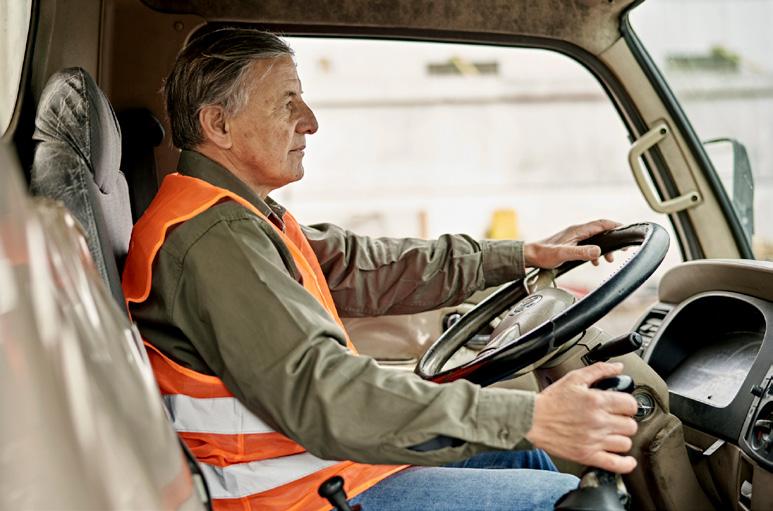
www.punjabitruckingusa.com July - September 2023 42 INDUSTRY NEWS
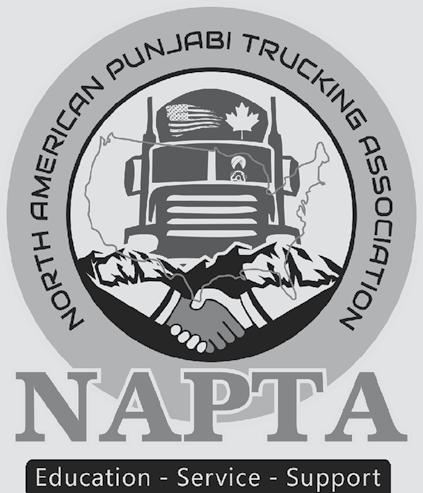
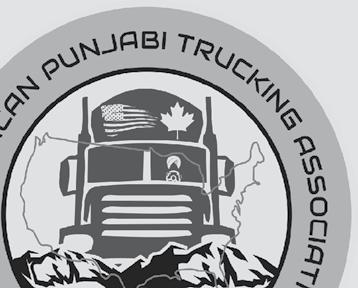





www.punjabitruckingusa.com July - September 2023 43 TRUCKING NEWS Punjabi Trucking Magazine delivered FREE to your home or office. Only $10.00 per year Just pay shipping & handling and get it via US Mail anywhere in USA Subscribe today Email: info@punjabitruckingusa.com or call 877.806.2525
lMby smyN qoN guMm hoeI ptISn ƒ ibfyn
pRSwsn v~loN dubwrw lwgU kIqw igAw hY[
lgBg pMdrW swl pihlW ieh ptISn guMm
hoeI sI[ ijs iv~c nvyN motr kYrIArW ƒ
kMm SurU krn leI ie~k pRmwixq muhwrq
tYst pws krn dI loV hovygI[
jnvrI 2009 iv~c ieh ptISn hweIvyA
AYNf Awto syPtI (AYfvokyts) v~loN dwier
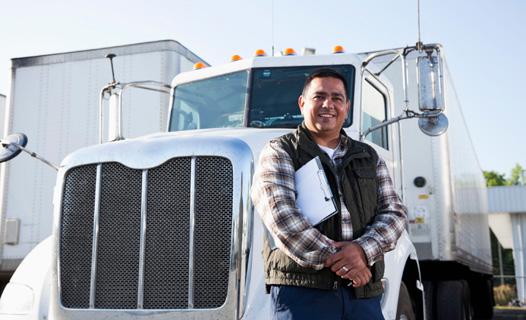
kIqI geI sI[ ptISn Asl iv~c nvyN
kYrIArW leI sur~iKAw pRdrSn ƒ ibhqr
bxwaux leI 1999 dy kwƒn dw hI ih~sw
sI[ iesƒ inaU AYNtrYNt syPtI ASorYNs
pRogrwm dy nwm nwl jwixAw jWdw sI[
Agsq 2009 iv~c ptISn vloN pRsqwivq
inXm bxwaux (ANPRM) dy AfvWs noits
nwl iek pRsqwivq inXm bxwaux qy pUrw krn leI AYfvWs noits dw pRsqwv kIqw hY[ jo Agsq mhIny leI qih kIqw igAw hY, inpuMnqw pRIiKAw vI ies pRikirAw dw ih~sw rhygI[
Asl 2009 ANPRM, jo ik nvyN mwfl leI hovygw, hyTW id~qy igAwrW KyqrW 'qy PIfbYk leI ikhw igAw, jo ie~k nvW tYst kvr krygw:
• nvyN ieMtrWt sur~iKAw ASorYNs pRikirAw dI pRIiKAw ƒ sQwipq krn bwry jwxkwrI[
• motr kYrIAr jW hor audXoigk
krnw cwhIdw hY, ies bwry ieh Kws jwxkwrI r~Kdw hY[
• ijs eyjMsI ƒ motr kYrIAr krmcwrIAW dI loV hovygI[ ies nwl motr kYrIArW dI sMBwvI krmcwrIAW ƒ nvyN ieMtrWt sur~iKAw ASorYNs pRogrwm dI imAwd dy Anuswr r~iKAw jwvygw[
• ieh mwfl tYstW dy ivkws, r~KrKwA qy lwgU krn Aqy auhnW dy pRbMD krn vwly KricAW dI jwxkwrI r~Kygw[
• eyjMsI ƒ nvyN pRvyS krn vwly krmcwrIAW bwry jwxkwrI lYx leI ies mwfl dI loV hovygI[
• ieh mwfl tYst inXmW 'qy kYrIAr dy igAwn ƒ vDwauxgy[
• ieh mwfl krmcwrIAW dy igAwn iv~c qy kYrIAr dI sur~iKAw vDwaux dI jwxkwrI iv~c mdd krygw[
• ieh mwfl nvyN ieMtrWt sur~iKAw ASorYNs dwKlw pRikirAw dy ie~k ih~sy vjoN tYst dI sQwpnw krygw qy aus nwl sbMDq hor Awm it~pxIAW qy vI iDAwn r~Kygw[
• ieh mwfl Coty audXogW dIAW Kws loVW bwry jwxkwrI dyvygw jo Coty audXogW leI BrosymMd hovygw[
dI AgvweI kIqI geI, pr nvyN inXm dI kdy vI pwlxw nhIN kIqI geI[
2009 iv~c AYfvokytW ny dlIl id~qI ik "nvyN pRvyS motr kYrIArW kol igAwn dI smr~Qw huMdI hY, ijs nwl auh sMGI motr kYrIAr sur~iKAw iv~c loVW dI pwlxw krn dy nwl-nwl sur~iKAq kMm krdy hn["
hux, ibfyn pRSwsn ny ie~k nvyN dwKlw sur~iKAw Brosw pRikirAw inXm bxwaux dy
ieMfstrIAW iv~c vrqI jWdIAW iksmW bwry jwxkwrI auplb~D krvwauNdw hY, jo ies Kyqr iv~c ivSyS nvyN qrIikAW dI pRvyS muhwrq r~Kdw hovy, jo ies mwfl vjoN kMm kr skdy hn[
• ieh tYsitMg pRotokol bwry jwxkwrI idMdw hY[
• eyjMsI ƒ iemiqhwn dw pRbMD ikvyN
jd Asl ANPRM swl 2009 iv~c jwrI kIqw igAw sI, qW tr~ikMg styk holfrW dy ivcwr v~Ko-v~Kry ivcwr sn[ mwlk-Awprytr Azwd frweIvr AYsosIeySn ny Aijhy tYst dw ivroD krdy hoey ikhw ik ieh isrP ieh swbq krygw ik "ibnYkwr ƒ tYst dyx Aqy pwisMg skor pRwpq krn leI FukvyN inXmW dI smJ vwlw koeI ivAkqI imilAw hY["
au~Qy hI AmrIkn tr~ikMg AYsosIeySnW ny inpuMnqw tYst dI loV dw smrQn kIqw hY Aqy nwl hI nvyN pRvyS krn vwilAW ƒ EpryitMg lwiesYNs pRwpq krn qoN pihlW sur~iKAw isKlweI pUrI krn dI loV hY[
www.punjabitruckingusa.com July - September 2023 44
ieMfstrI inaUz
nvyN kYrIArW ƒ nvyN/purwxy pRsqwivq inXmW leI
inpuMnqw tYst pws krny lwzmI
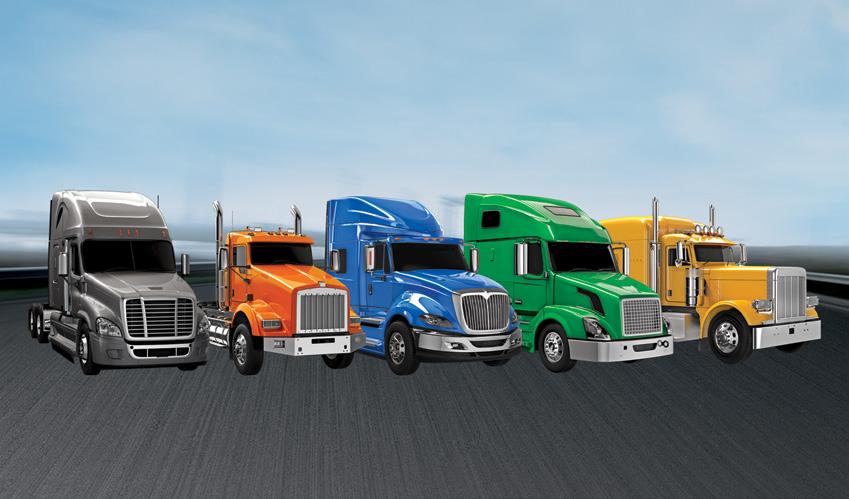

www.punjabitruckingusa.com July - September 2023 45 Over 30,000 Parts For The Most Popular Trucks Freightliner | Kenworth | International | Volvo | Peterbilt USA DISTRIBUTION CENTERS Monroe Twp, New Jersey Ontario, California Duncanville, Texas New Lenox, Illinois CANADA DISTRIBUTION CENTERS Brampton, Ontario Edmonton, Alberta
Dreaming big and actualizing them into reality are two different things. Achieving goals requires a lot of skills and qualities. It takes immense courage, determination and ability to overcome obstacles that stand in the way of success. Matthew Hoelscher is a prime example of an individual who has successfully made a name for himself in the construction, agriculture and transportation industry, inspiring others to pursue their version of the American dream. Matthew Hoelscher's story is an excellent place to start if you're seeking inspiration and motivation.
Rewinding: It All Starts From the Farm
Matthew is the founder and CEO of SONSRAY. Matthew's creative imagination and unwavering strength have been instrumental in his accomplishments. From being raised on a farm to fetching his dreams, he has done a remarkable job. Growing up, he was surrounded by heavy machinery, and unintentionally,
Living the American Dream: Sonsray's Expansion Across 5 States

Matthew became familiar with the heavy equipment and acquired an excellent knowledge of them. Upon his family's motivation, he went to college and graduated with a degree in mechanical engineering and got a job in sales in the transportation industry.
Vision To Think Big

As Matthew was into the transportation industry in 2009, he saw an opportunity in refrigerated trailer rentals and spared no time to seize it. After a tiring year of asking for referrals, he decided to give it a shot and start his own company, and that’s how SONSRAY came into being. The name holds a high place in Matthew’s life as it reflects his love for his SONS and daughter RAYne. By 2010, Sonsray Rentals & Leasing trailers were running on the road with ten established locations. Each continues to assist customers with transporting refrigeration and trailer equipment via the sister company Sonsray Fleet Services. In 2012 Matthew saw through an opportunity to open 12 existing construction equipment locations and invested in it. They have now grown into 15 locations and operate as Sonsray Machinery. Additionally, Matthew expanded his business into the agriculture industry and acquired 5 existing agriculture equipment locations in 2021.
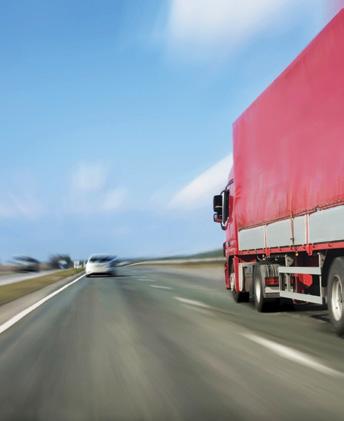
Dream It. Work for It. Live It.
Matthew Hoelscher is living the life of what dreams are made of. He is the proud and sole owner of the Sonsray Group and cherishes spending quality time with his family. Matthew sets an example for emerging entrepreneurs and exemplifies how one can easily balance work and family life. Matthew resides in Redondo Beach, California. Despite his formal image as a CEO managing five companies, Matthew enjoys engaging in fun activities such as surfing and basketball and spending time with his loved ones.
A Family of Millions
From workers and employees to customers, SONSRAY is a family of millions. Starting from nothing but a clear vision and some expertise, today, there are 33 Sonsray locations on the West Coast and East Coast, stretching from the borders of Mexico to Canada in 5 states. SONSRAY is proudly providing customers with world-class equipment and aftermarket support. In 2014 Sonsray was established to house the divisions under one corporate roof. Sonsray Rentals joined the family in 2019 to better serve customers interested in machinery rentals. The utmost priority of the SONSRAY group is to look out for its customers and support them in the best way possible in the construction, agriculture, equipment rentals, transportation and trailer rentals, and leasing businesses.
www.punjabitruckingusa.com July - September 2023 46 INDUSTRY NEWS
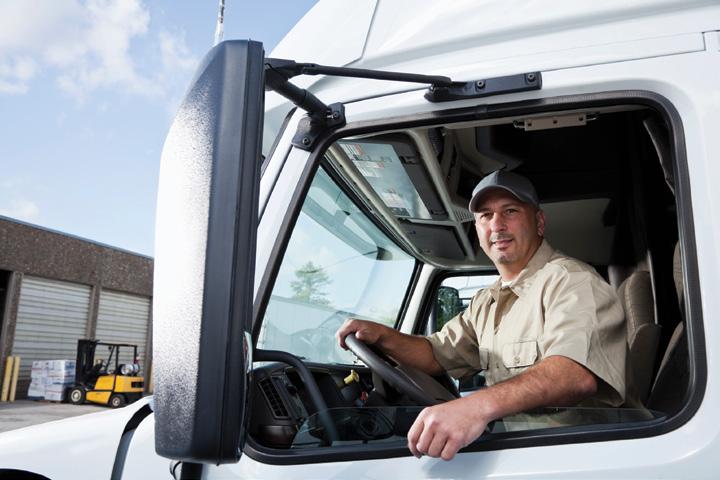

www.punjabitruckingusa.com July - September 2023 47 TRUCKING NEWS ONLY WEBSITE Where Majority of Punjabi Trucking Companies Post their Trucking jobs 877-806-2525 559-701-8000 www.cdljobsguru.com Are you looking for CDL Jobs? Please create your FREE profile and get job offers in your inbox!!! info@CDLjobsguru.com

hr qrWH dy lof Aqy sVkW leI, nvW Volvo I-Torque hux mOjUd hY 8.5 MPG* q`k pRwpq kro, BwvyN qusIN 55 jW 85 MPH**, phwVI jW p`Dry ielwky iv`c clw rhy ho[ swfI mShUr Aiq-auq`m gyAirMg Aqy trbo kMpwaUNifMg tYknwlojI rIAr-AYksl Anupwq nUM 2.15 q`k r`Kx dI smrQw r`KdI hY[ nqIjw ieh hY ik 16 lItr qoN G`t iksy vI hor ieMjx nwloN G`t rpms 'qy vDyry twrk Aqy hwrs pwvr idMdw hY[ quhwfy sB qoN cuxOqIpUrn rsqy nUM vI AweI-tork ij`qx leI iqAwr hY[ Volvo Trucks. Driving Progress. AwpxI iksm
pyS hY Volvo I -Torque ™ *Actual fuel savings dependent on dut y cycle, load, driver behavior, and more * *Always obey posted speed limits Learn more at volvotrucks.us/itorque
dw isrP ie`k






























































































